
Garmin has just announced the Garmin Varia Vue, which combines a 600-lumen front light with a safety camera capable of recording in 4K. This essentially becomes the logical pairing to the Garmin Varia RCT-715 rear camera/radar combo. Of course, given it’s Garmin, the price isn’t cheap: $549. And of course, there’s also a secondary subscription option as well, to store your footage in the Garmin Vault cloud platform (a service that’s been on their vehicular dash cams for years.
I’ve been putting the Varia Vue through its paces over the last few weeks across a variety of riding scenarios. From paved roads to dirt roads, daylight to sunset to nighttime, all to see how well it works, and how it compares.
Finally, note that Garmin sent over a media loaner unit to test out. As usual, this review is not sponsored (nor does any company get to preview anything I review), and I don’t take any advertiser money from any companies I review. Once this unit goes back, I’ll go out and buy my own for any future testing needs. If you found this review useful, you can use the links at the bottom, or consider becoming a DCR Supporter, which makes the site ad-free. And, of course, it makes you awesome.
In the Box:
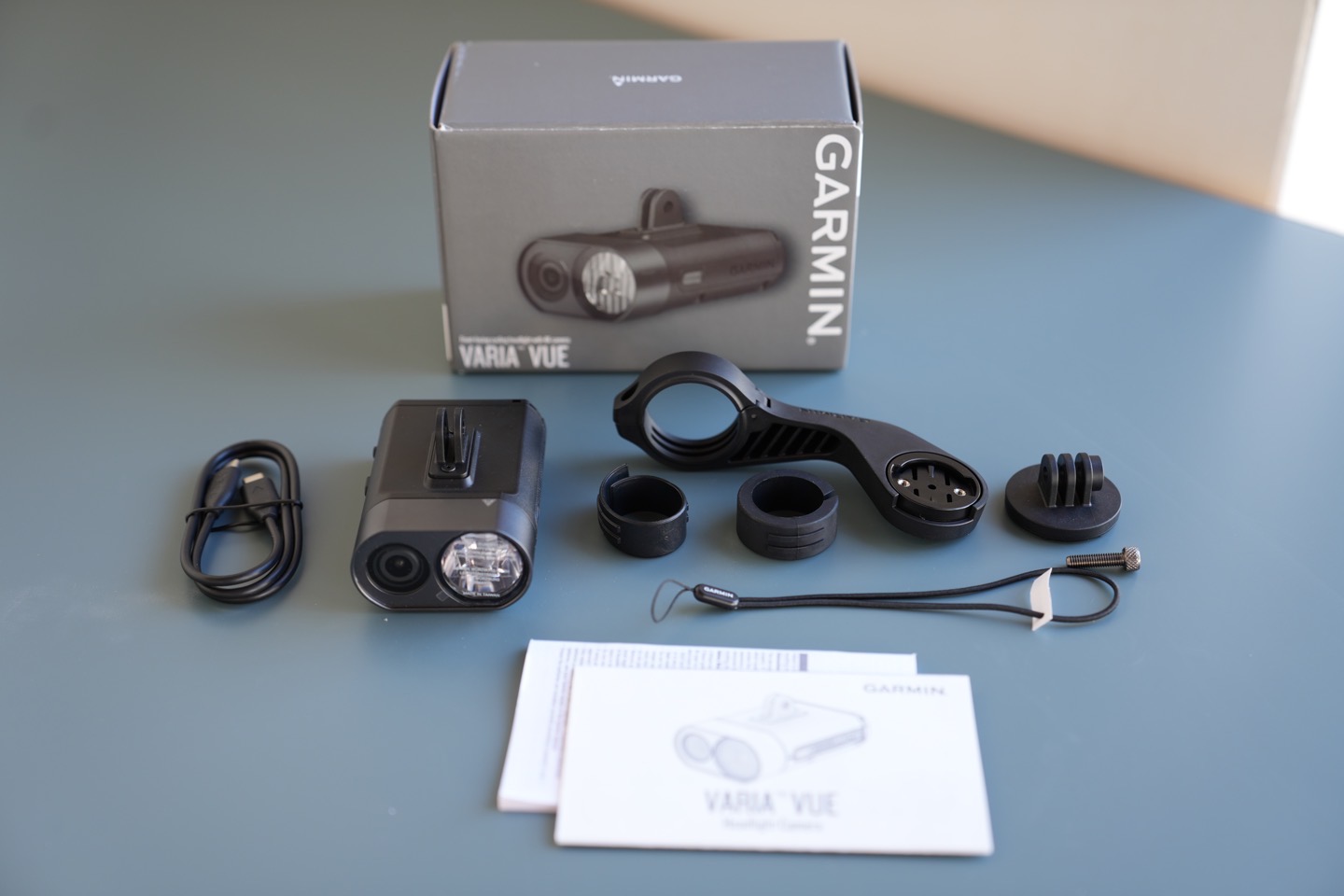
The Varia Vue includes everything you’d need to mount and use the camera/light, as well as to hold a Garmin Edge series device (or actually, a COROS Dura, Hammerhead Karoo with adapter, Sigma devices, Wahoo with adapter, and others, since they all use the quarter-turn mount).
In total that’s:
– USB-C charging cable
– Garmin Varia Vue unit
– Out-front mount for round handlebars
– Handlebar adapters (for smaller bars)
– Varia Vue to handelbar mount quick release
– Tether
– Screw for Varia Vue into GoPro adapter quick release
Here’s a closer look at the camera bits:
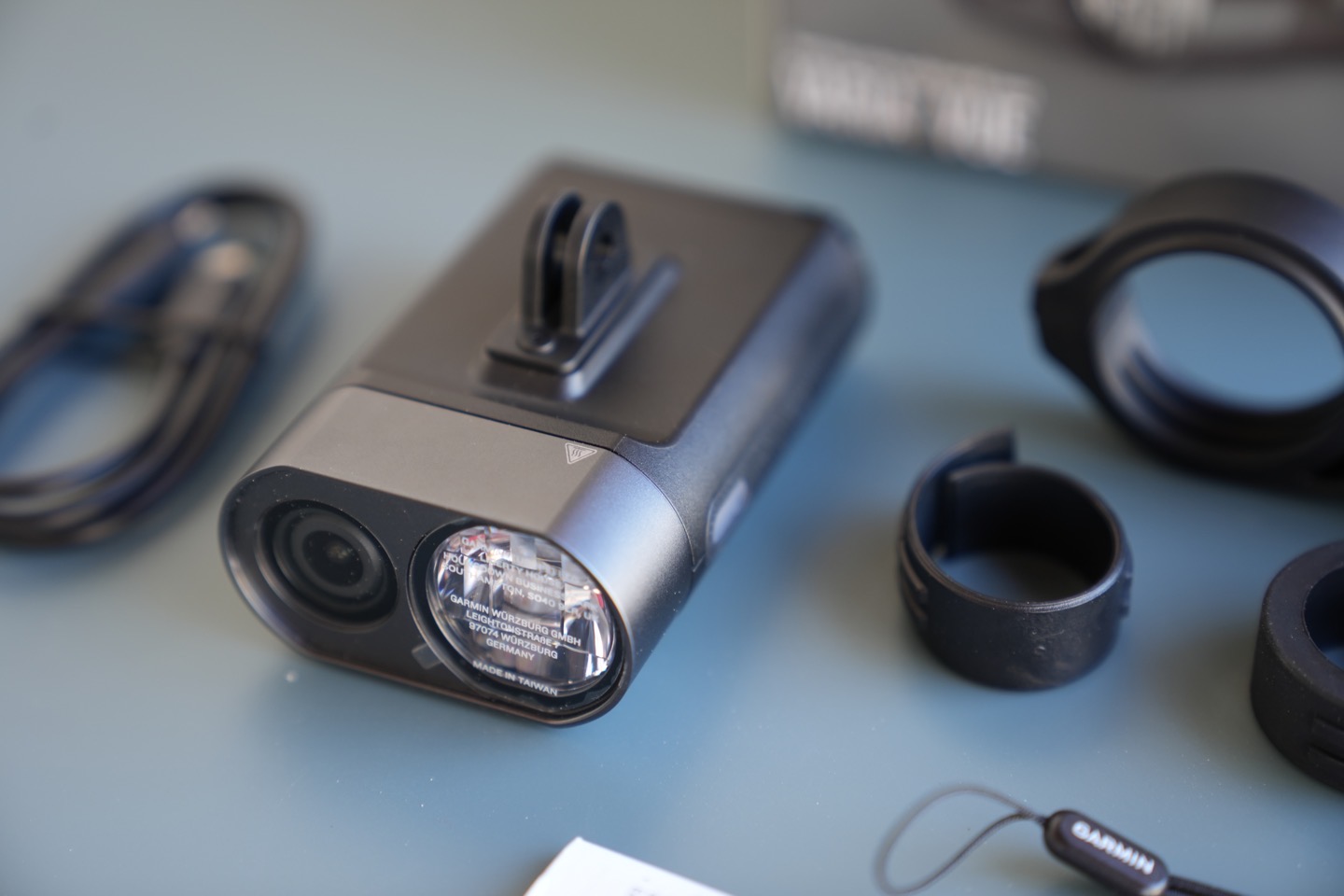
And then the mount bits:
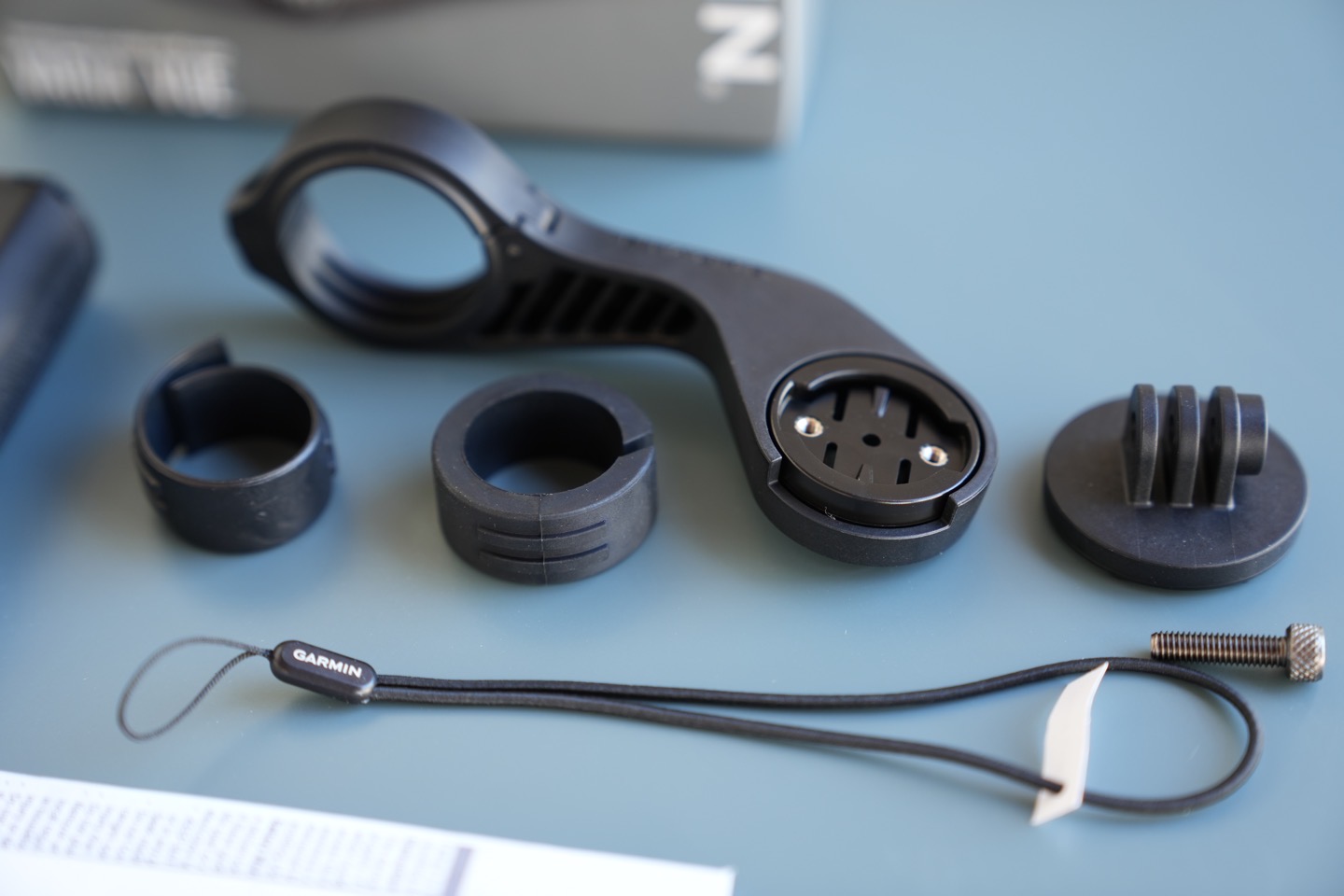
Here’s the adapter that snaps to the underside of the Garmin mount, with a GoPro-style mount on the one side to attach to the Varia Vue Camera. This is great, because it also means that A) You can use the Varia Vue with any out-front mount that has a GoPro adapter, and B) You can use your GoPro with the Garmin out-front mount.
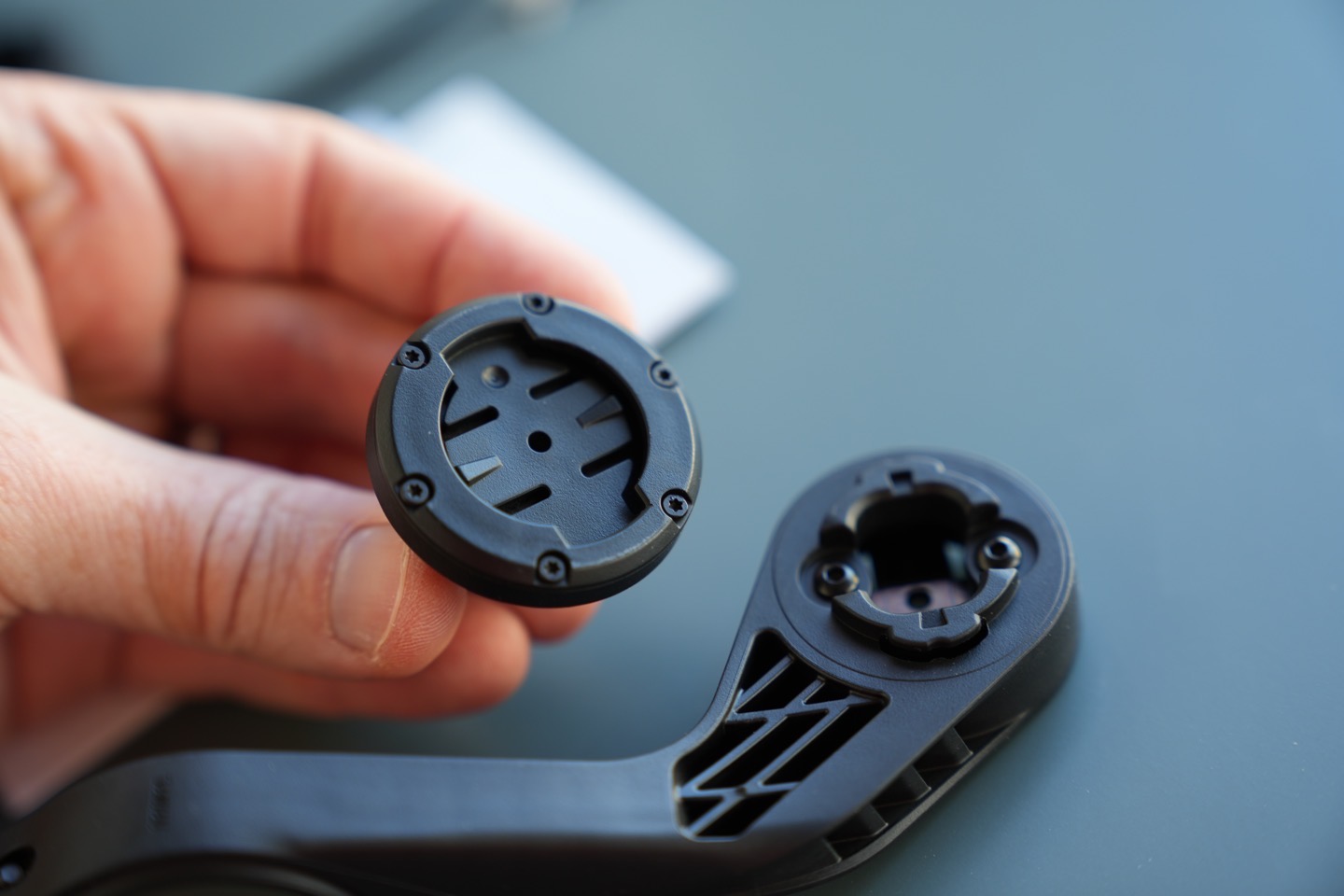
Ok, with that, let’s get it mounted up.
Mounting & Setup:
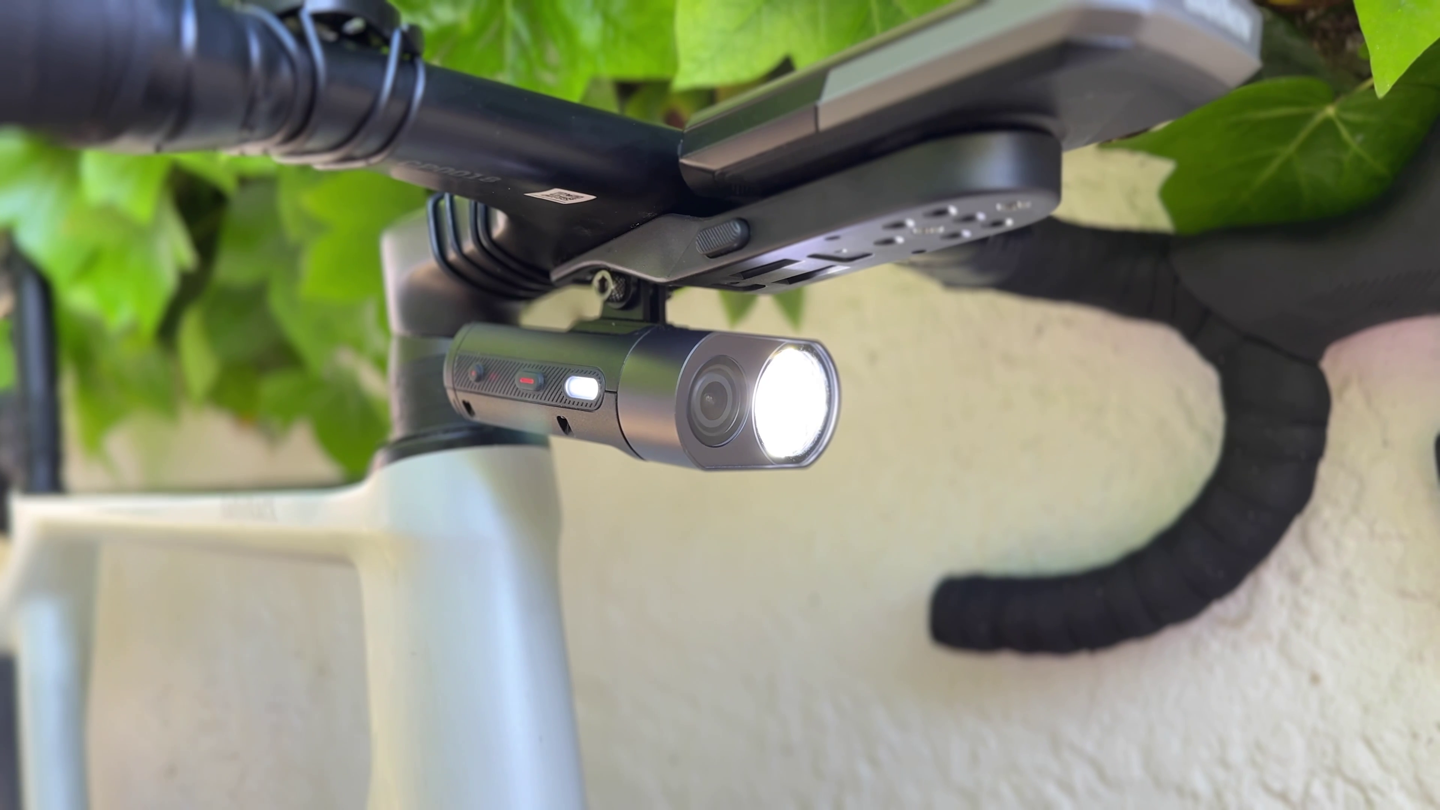
First up, is the handlebar mount. The Varia Vue comes with an out-front Garmin mount, as well as an underslung adapter kit to snap it in place. Basically, you’re getting a mount for your Garmin Edge computer, as well as a piece that connects to the bottom:
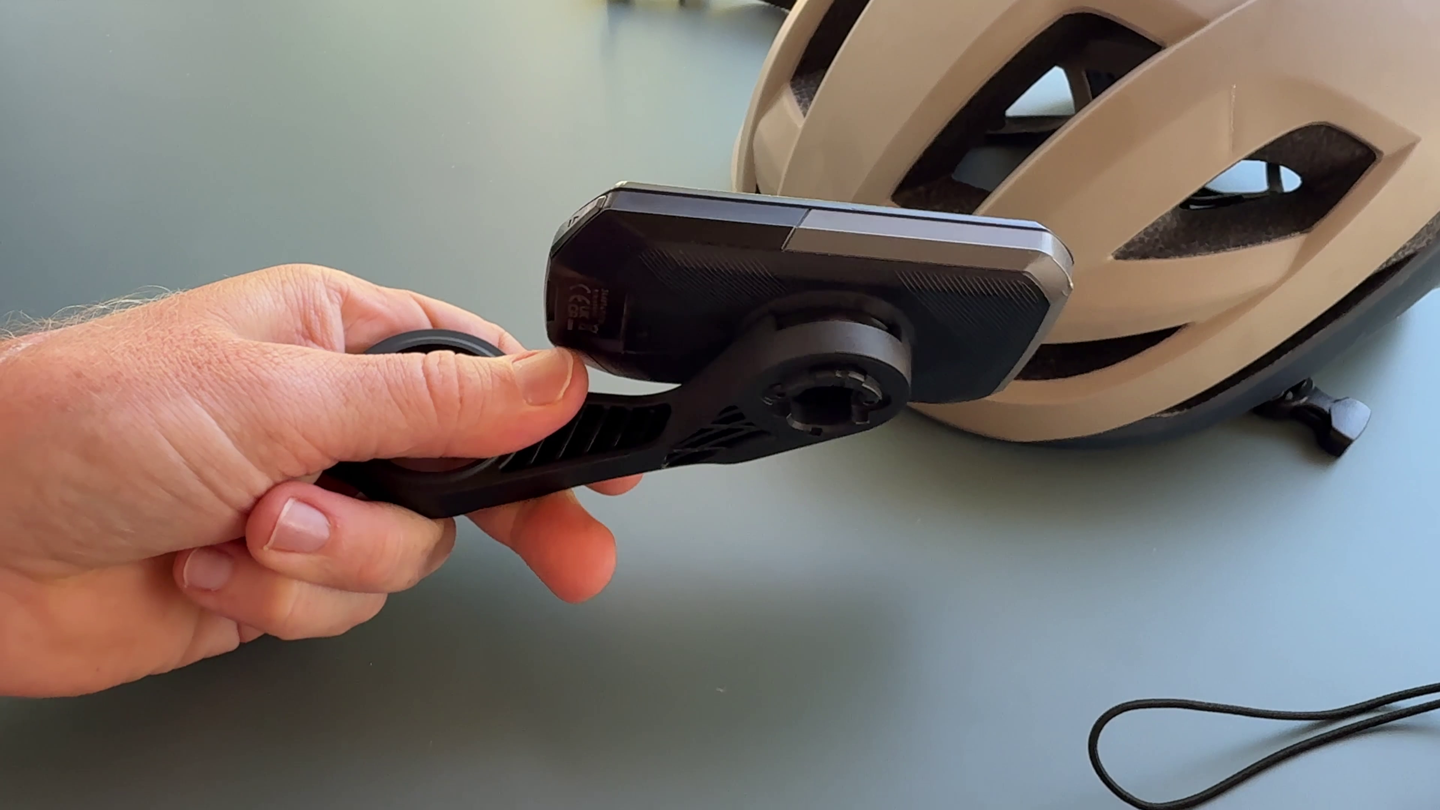
To connect the Varia Vue, you’ll connect the adapter plate to the GoPro mount first, like so:
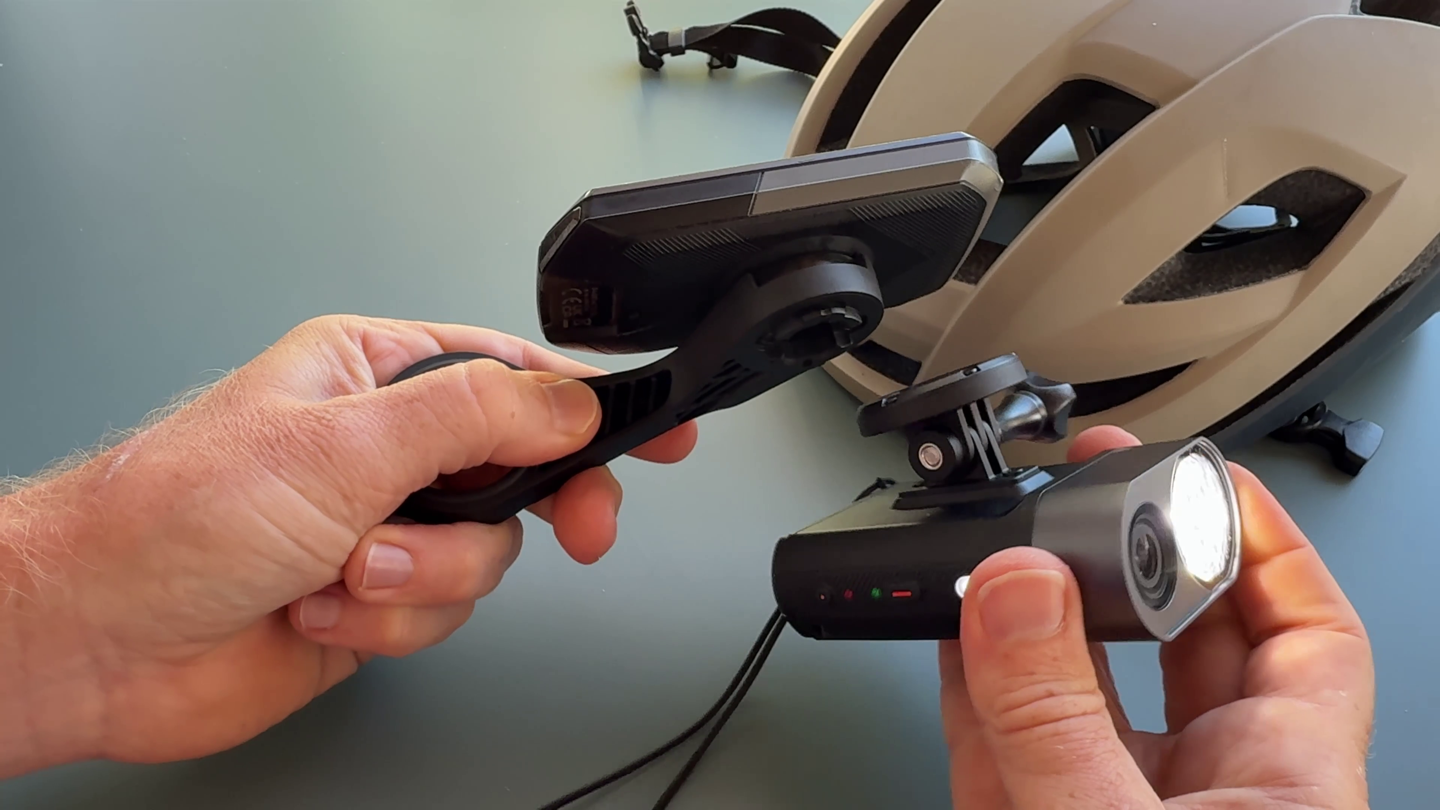
And then snap that to the bottom of the Garmin out-front mount:
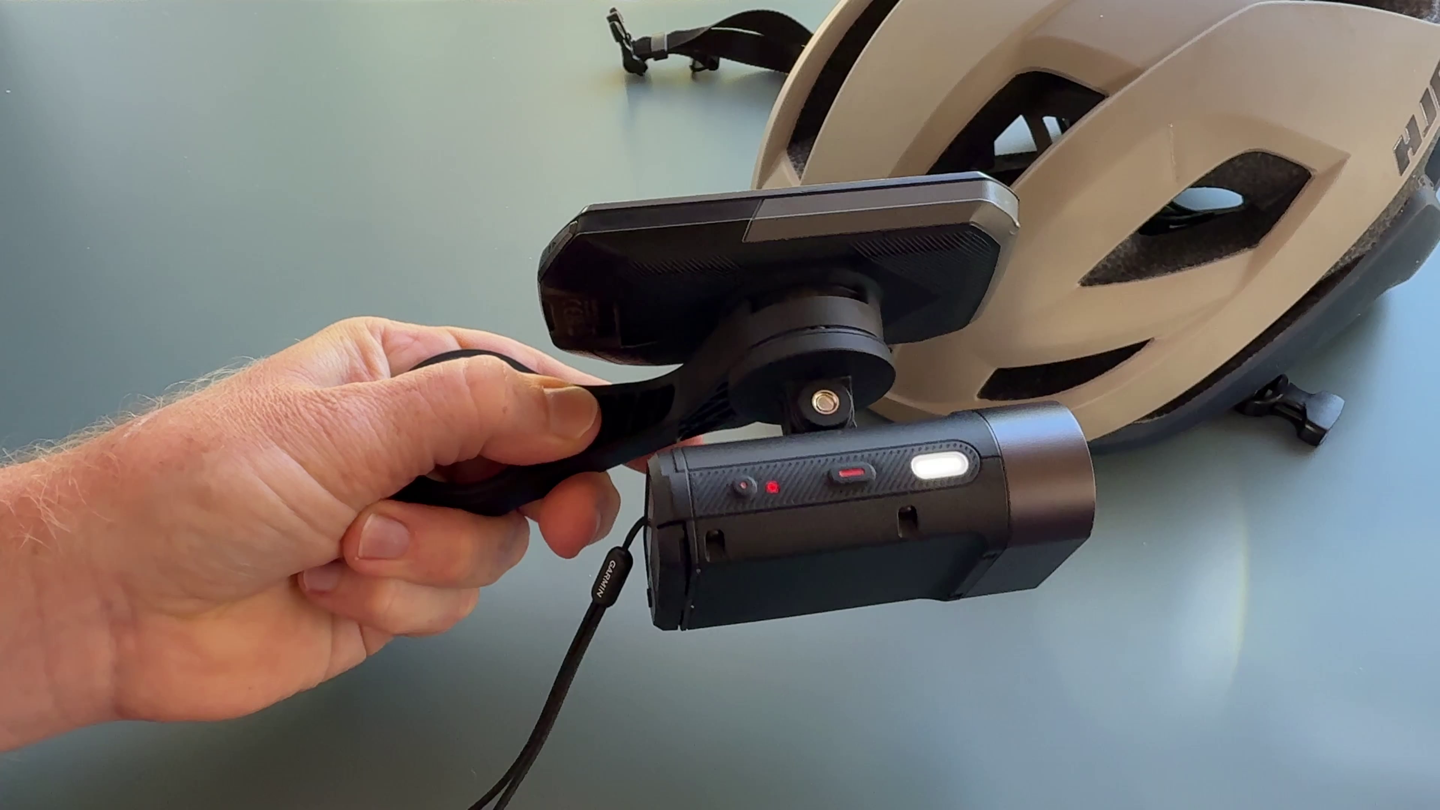
The good thing here is that you don’t need to use the Garmin out-front mount. In fact, in my case, I used my Canyon Bike’s out-front mount for most of my rides, and then the GoPro adapter on the bottom of it:
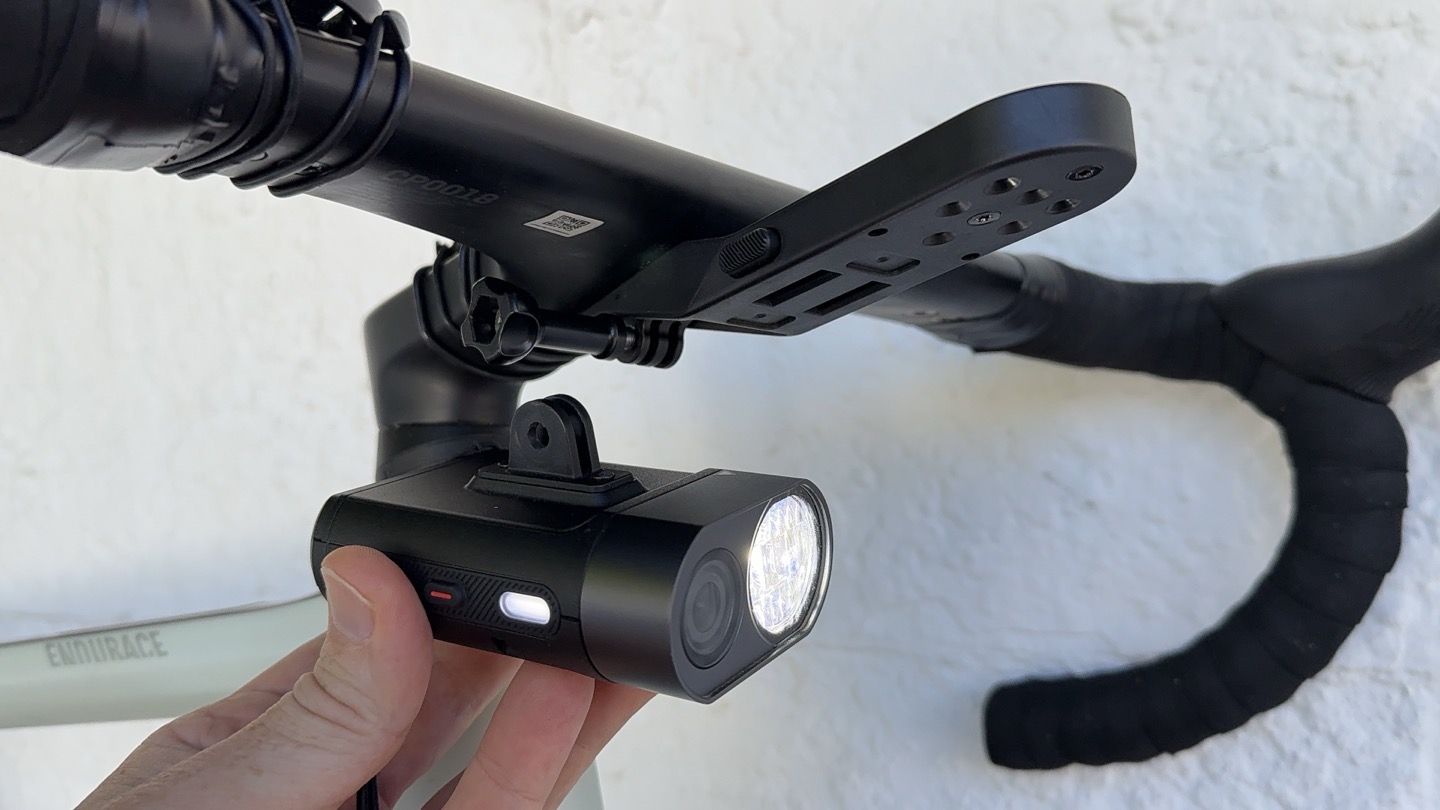
The GoPro adapter on the underside of most out-front bike mounts is super common, and effectively a universal standard.
Next, you’ll want to pair the Varia Vue to your bike computer. If you’re on an Edge x40 or x50 series device (e.g., Edge 540/840/1040, or Edge 1050), then you’ll get both light control and extended camera control options. Whereas on other bike computers, from Garmin or otherwise, you’ll get the standard ANT+ light controls (for adjusting brightness). But not camera controls. That’s actually not a huge thing, since the camera automatically records as soon as it powers on. The camera controls allow you to manually save clips/photos on the fly while riding (making it easier to find those clips later).
Going into the pairing screen, you’ll search for ANT+ Bike Lights. This is an industry standard and is supported on Garmin, Wahoo, Hammerhead, COROS, and numerous other bike computer brands. The key benefit of the ANT+ Bike Light standard is that it will automatically turn on/off the bike light when you start/end most rides, as well as allows control of the light brightness and flash settings.
The first time you pair it up, it’ll walk through the basics of the headlight.
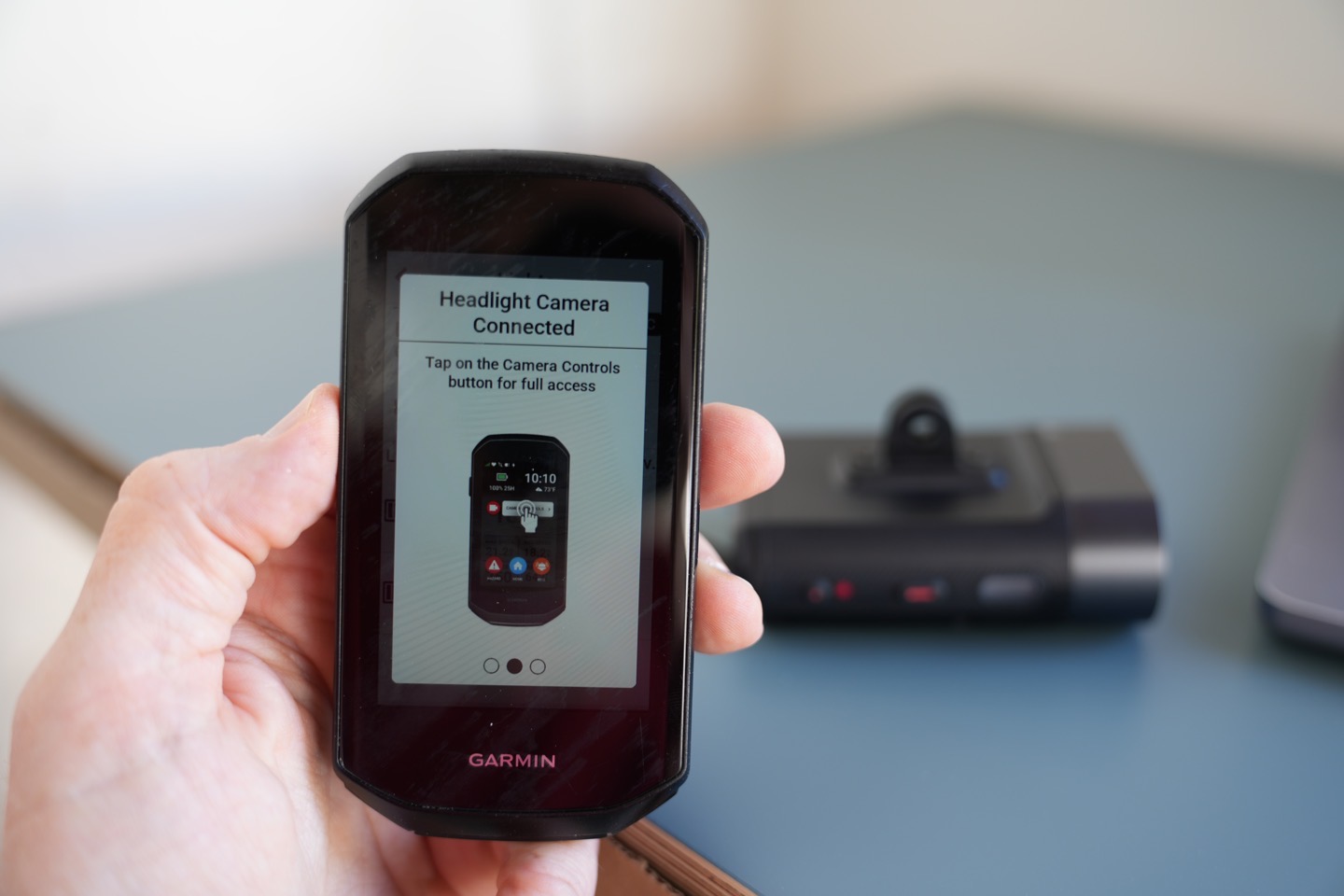
Now, I’ll get into the camera controls in a bit, but that piece will only work on the Garmin Edge series devices, and not other platforms, as there is no standard for camera controls (Ok, nitpickers corner: There is a standard, but none of the other companies have implemented it).
Still, all other companies have implemented the light controls piece, which is called a ‘Bike Light Network’, enabling you to add front or rear bike lights from any number of different companies (be it a Garmin, Trek, Wahoo, etc….). In most cases, cycling radars are also considered ANT+ Bike Lights as well (technically they have both the ANT+ Radar and ANT+ Bike Light profiles). Point being, it acts as one cohesive light system when paired on most bike computers. Here you can see the Hammerhead Karoo, COROS Dura, Garmin Edge 1050, and Wahoo ACE, all connected and showing the light controls:
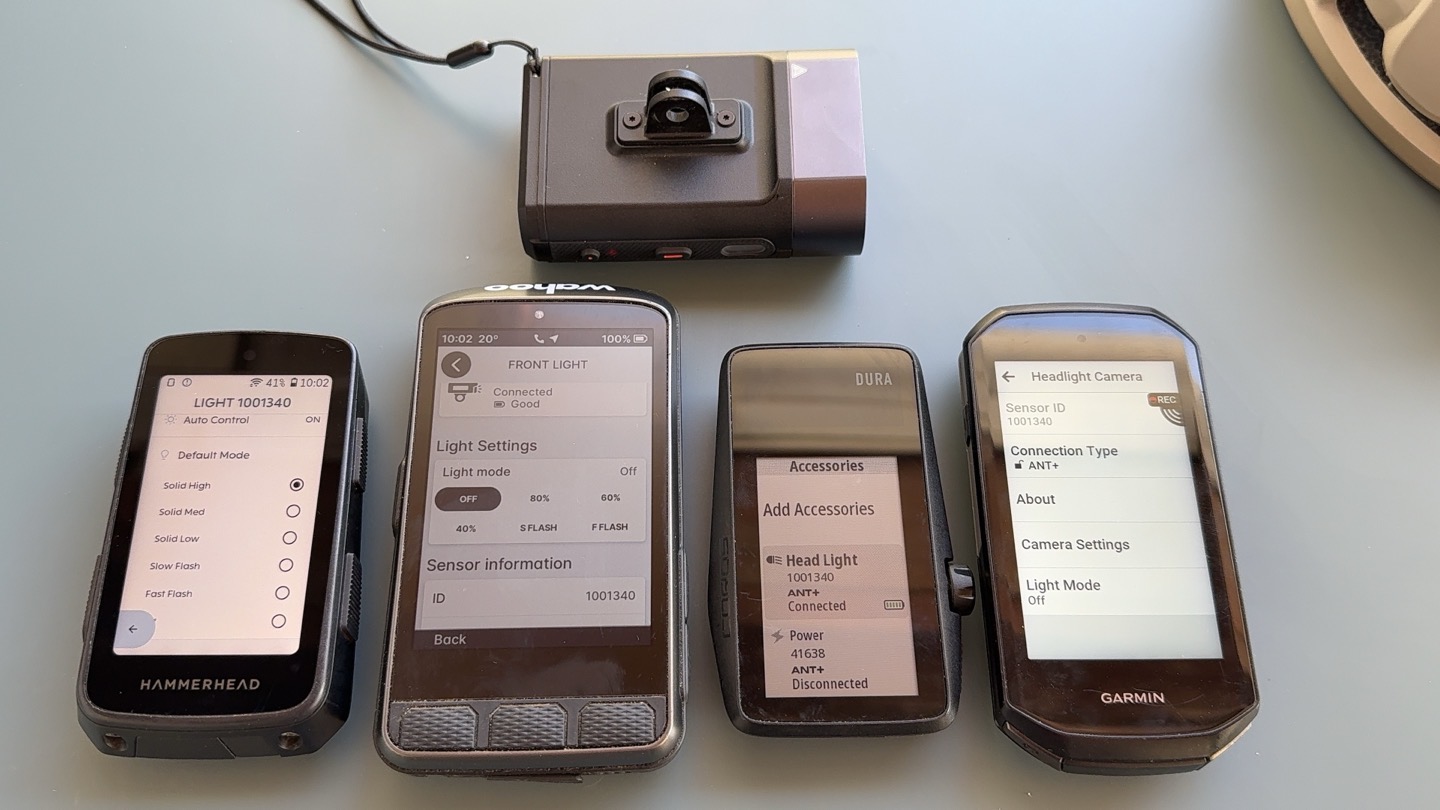
Ok, with that all set, let’s get into some of the light control pieces, which are more universal, and then we’ll dive into the camera control pieces.
Light Control & Brightness:
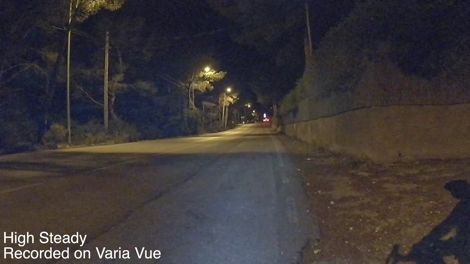
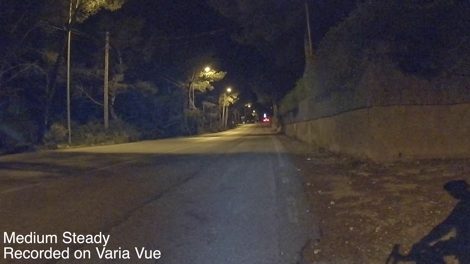
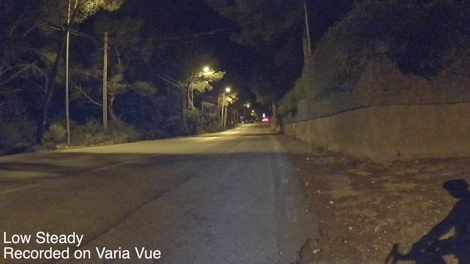
First up, we’ll start with one of the easier things, which is the light control pieces. Like all aspects of the Garmin Varia Vue, you can control it either from your phone or a Garmin device. However, with light control also leveraging the ANT+ standard, you can further control it on virtually all bike computers from Wahoo, Hammerhead, COROS, and a number of others. See, standards are neat, ehh?
Within the light control options, there are five light options:
High (steady on) – 550 lumens
Medium (steady on)- 300 lumens
Low (steady on) – 140 lumens
Night Flash – 400 lumens
Day Flash – 600 lumens
However, note that if you buy the StVZO version, sold in Germany, it has a lower light rating:
High (steady on) – 165 lumens
Medium (steady on)- 120 lumens
Here’s the control panel on the Garmin Edge:
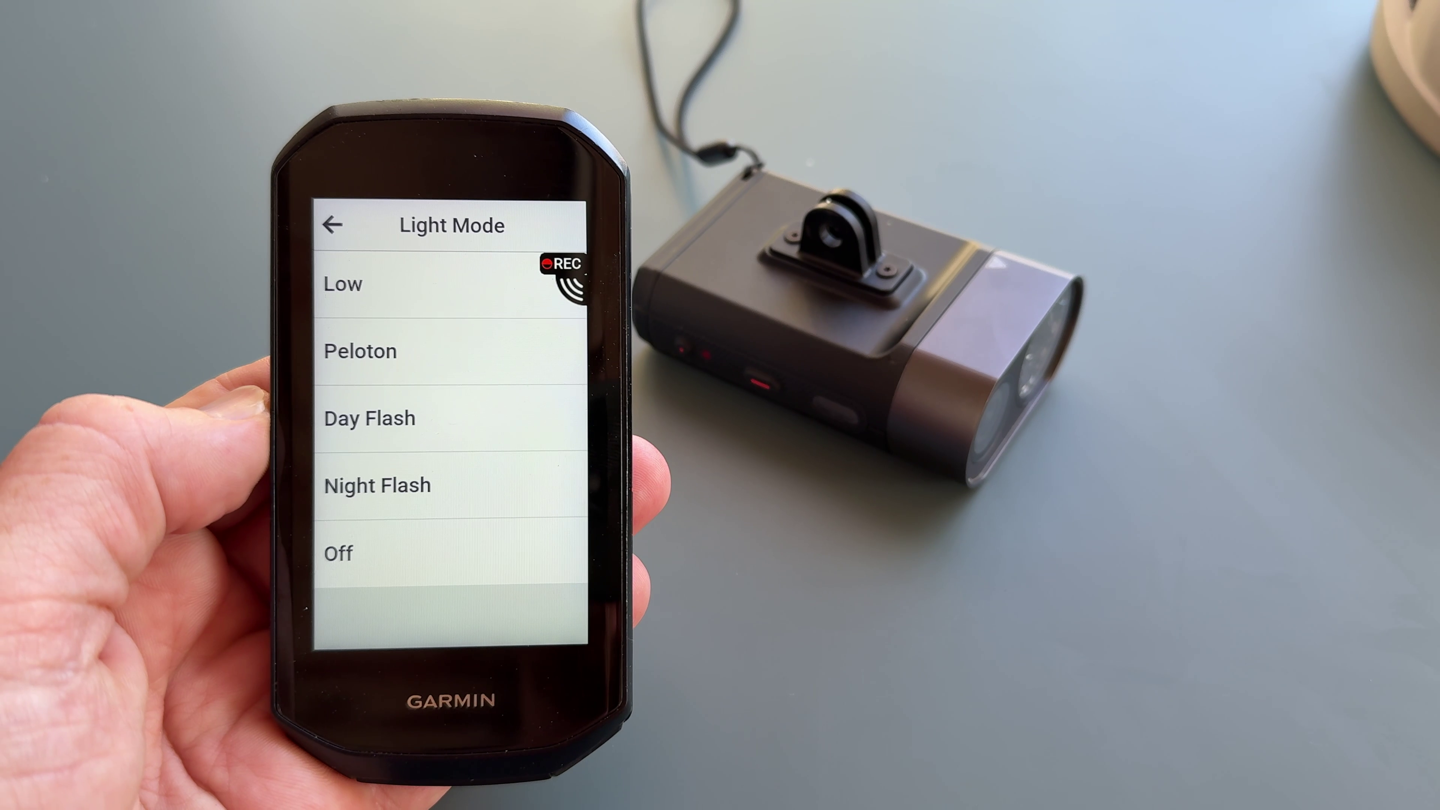
When it comes to visibility at night, I used the high steady-on (550 lumens), which was frankly too bright in some cases. For example, as you’ll see later in the camera footage section, it actually blows out the license plates with too much light for Garmin’s not-so-awesome-camera-sensor, so that you can’t read the plates in front of you, though you can read the ones on parked cars, as the light isn’t directly hitting them.
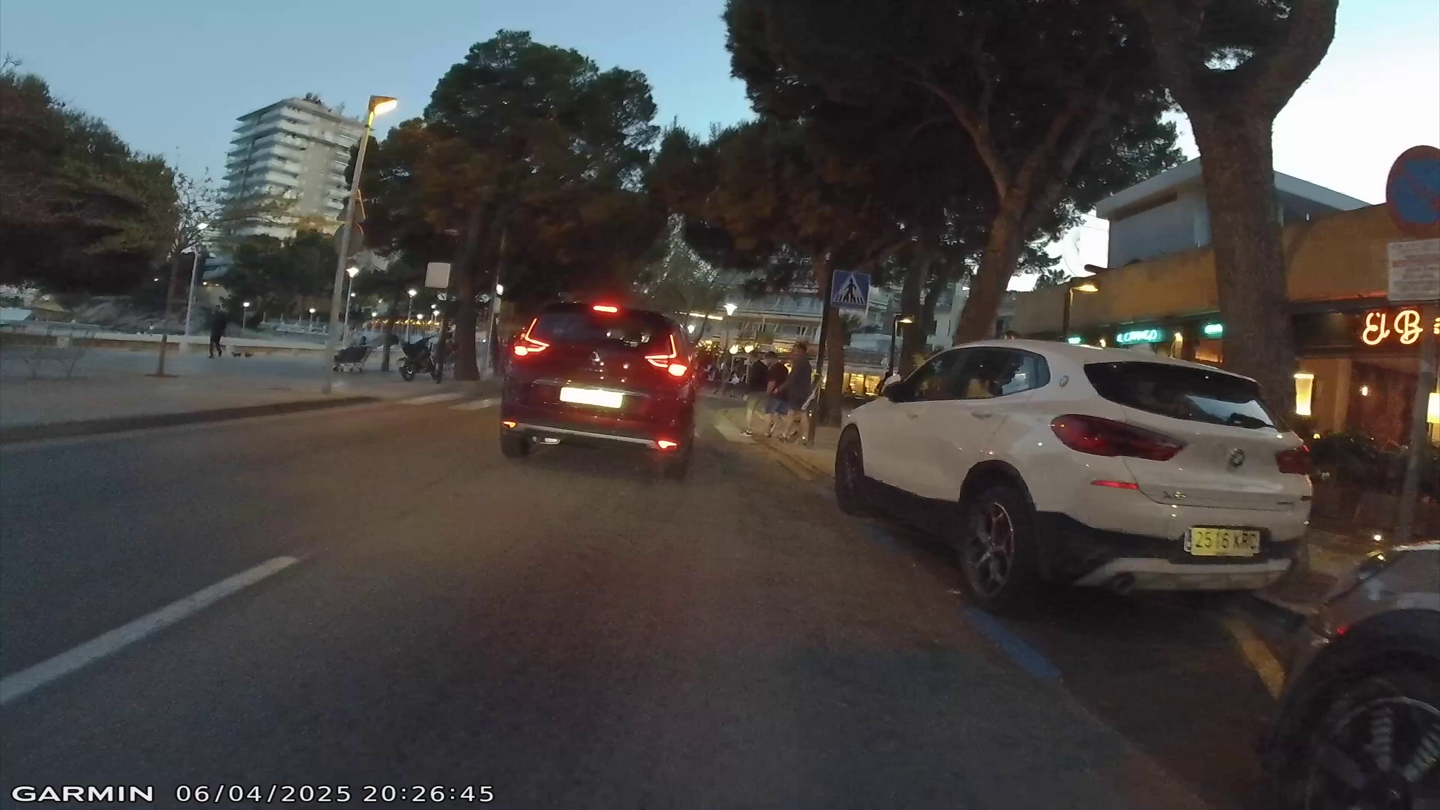
Out of all the night footage I have, I was only able to get a single license plate when the driver went astoundingly slow past me, and there was a secondary car a bit behind them to illuminate the plate, but not yet in my headlight to blow out the plate.
But otherwise, it all looked like this, with unreadable plates. That said, in terms of capturing the general arc of an incident, this would do it just fine (if the car stopped or someone otherwise could capture the plate).

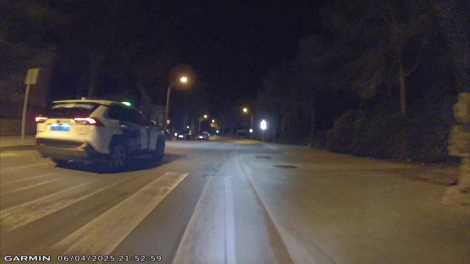
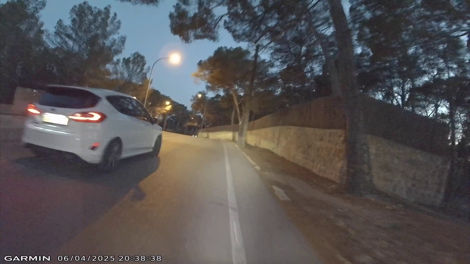
Off-road, the light was actually perfectly fine for totally dark dirt roads (on high). While Garmin’s camera isn’t awesome at capturing that, and makes it appear far darker than it was, to our eyes, it was totally fine:
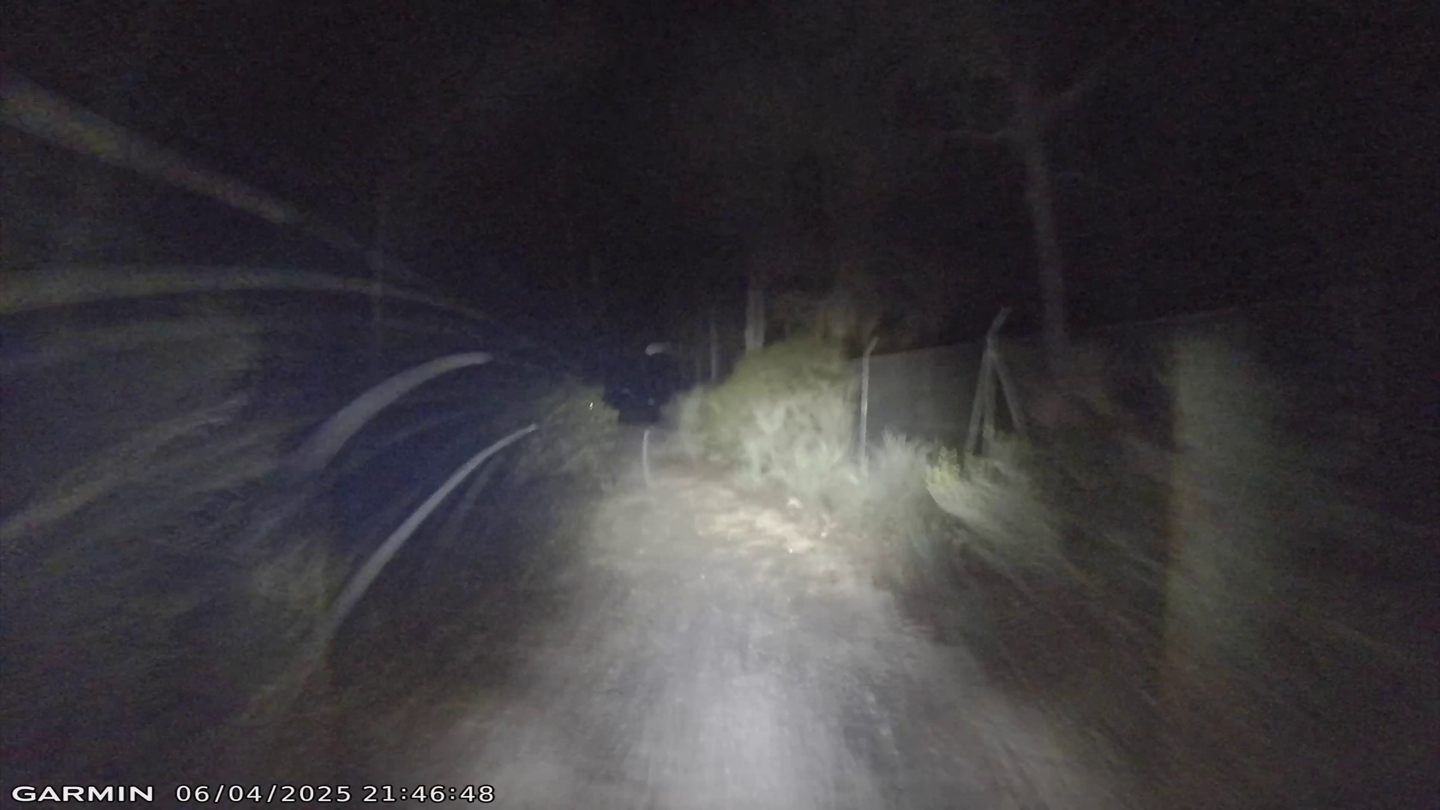
Heck, I even did some night trail work with it:

Meanwhile, in terms of visibility of the cyclist, first note that there are lights on the two sides:
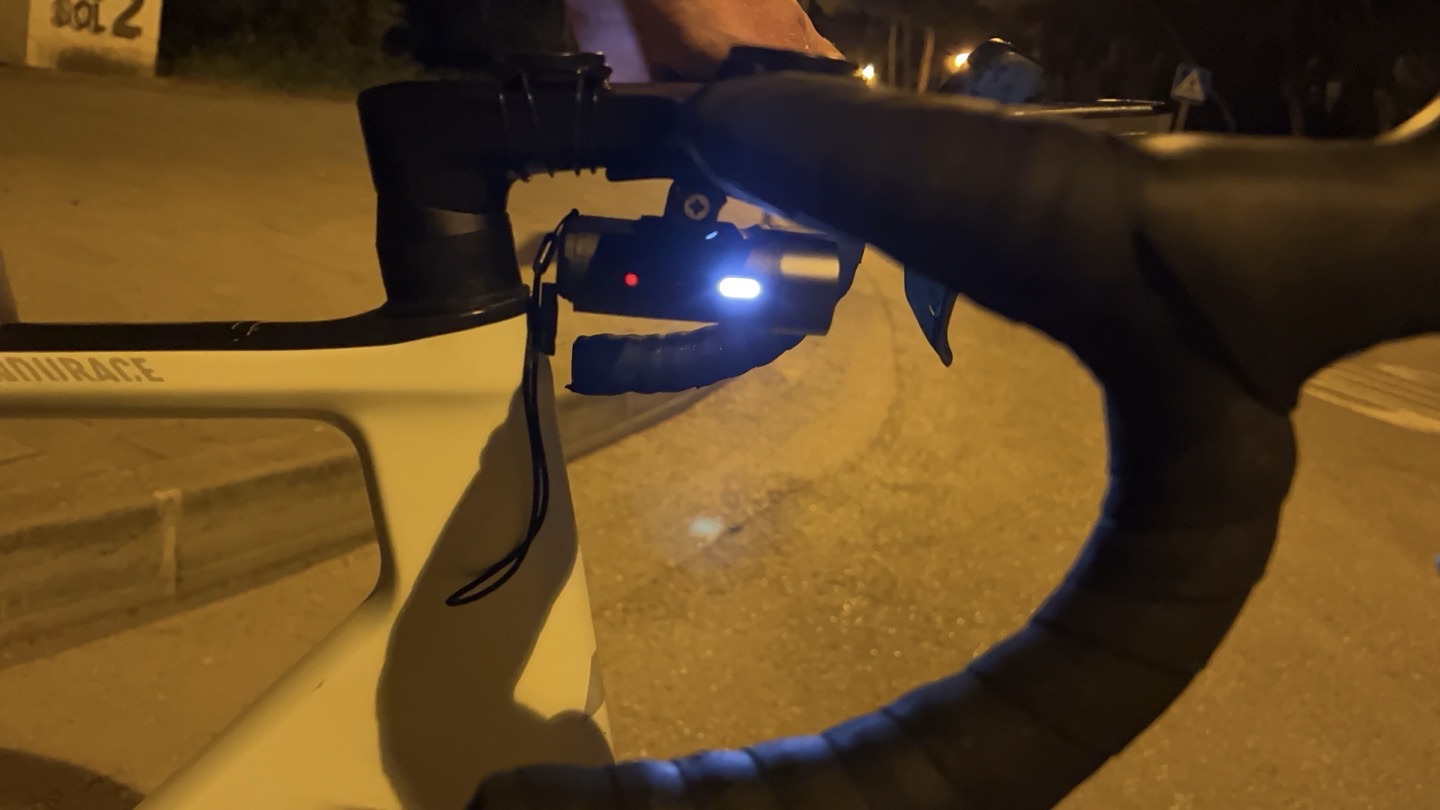
At night, in a low setting, here’s what I looked like some 170m away:
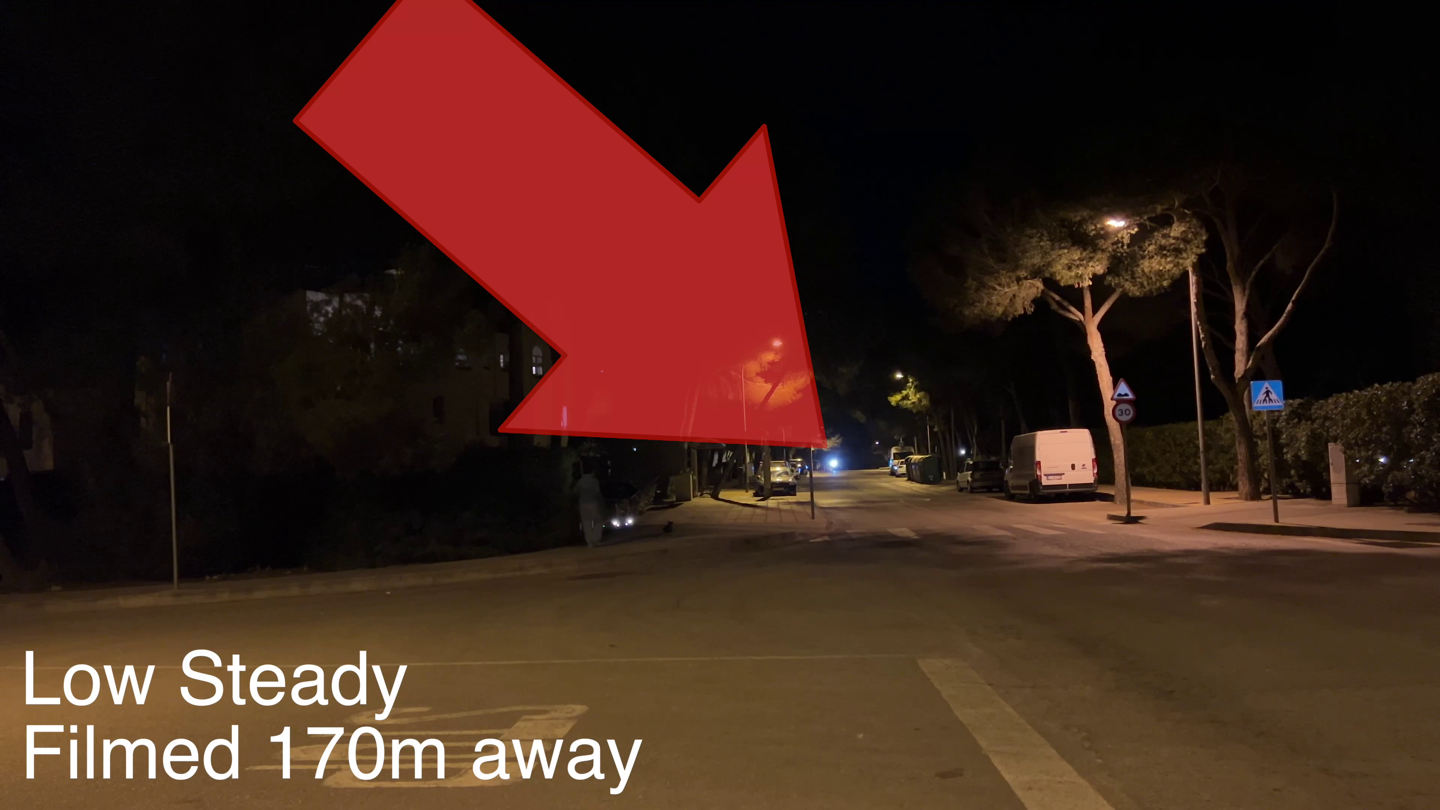
Meanwhile, at day, also in low setting, some 250m away:
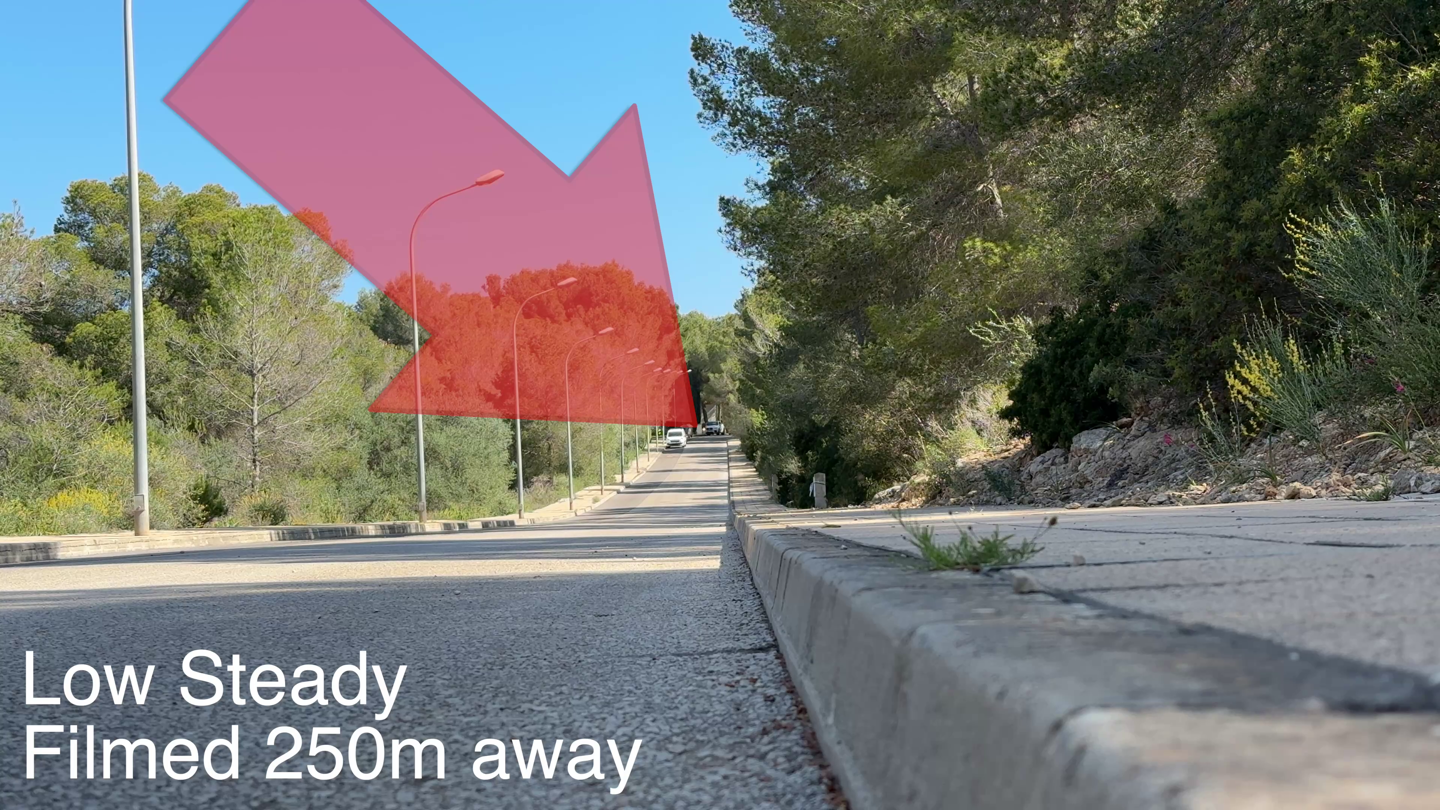
In general though, for on-road usage that the Varia Vue would be targeted at, the high steady 550 lumens is probably overkill, both in terms of the light you need to see the road, as well as the light needed to see you. But hey, it’s nice to have the option if you want it. Further note that by default your Garmin (and most other bike computers), will automatically control the brightness based on the available light/sensors.
For daytime use, on virtually all my rides, I went with the ‘Low’ steady on setting. Here in Europe, blinking lights are mostly frowned upon, whereas in the US, blinking lights are the norm. The light setting is the biggest factor in terms of battery life. Here’s Garmin’s official chart:
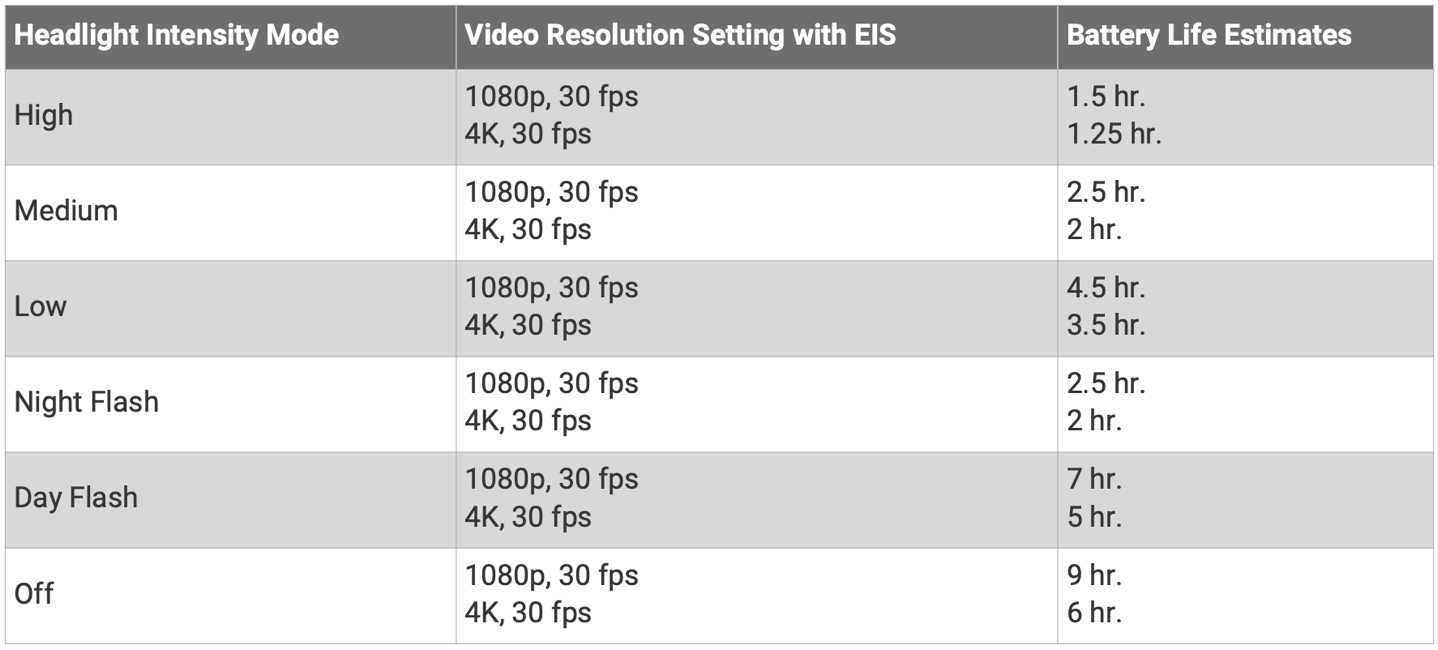
Do note that in Germany, with the StVZO version that limits the light, it has different specs for the battery times. You can find those exact battery specs on Garmin’s site here.
Because testing every possible combination is tricky, both myself and Des of DesFit have been trying different light/camera combinations for battery burn. Here’s the rough consolidation of our testing:
High Solid, with 4K/EIS: 2hr 10mins (but was just sitting still, so less accelerometer usage probably overestimates)
Medium Solid, with 4K/EIS: Lasted 90 minutes
Low Solid, with 4K/EIS: Did a 3hr 15 min ride, had 60%+ battery remaining (3 out of 5 battery blocks)
No light, just 4K/EIS: Did 3hr ride, had 50%+ remaining
*Plus a bunch of sub-90-minute tests I didn’t do battery testing on*
In other words, for some settings, like Low-Solid with 4K/EIS, I actually got well beyond spec (double it). I will note though that, due to a bug around Garmin Vault, I did run into an issue in the last few days where basically the battery life was halved, as it was apparently failing to charge during the Vault uploads, yet reported as actually being fully charged. Garmin says the next firmware update will fix this. In the meantime, not enabling Vault uploads is an option (or…ya know…not paying for Garmin Vault), or clearing out any saved/locked clips off the card.
Camera Control (Garmin Edge):
In the first part of this section, I’ll cover the Garmin-specific camera control options (for Edge x40 and x50 series devices), whereas in the second section after this I’ll talk about controlling the camera from your phone instead. You can also press buttons on the side of the unit, cross-referencing it to the decoder ring of light colors in the manual. But, nobody is going to willingly do that.
Now, when it comes to the Garmin Edge UI for this, it does seem overly complicated. At least in terms of initial usability. There’s numerous ways to get to the different UI elements, but each way presents itself slightly differently (for example, you can see/check the light level when you go via Sensors > Light network, but not via Camera controls > Headlight Camera). But I’ll save my rants for other topics.
To see the quick-access camera controls, you just tap anywhere on the Edge screen, which brings up these big buttons below the battery/hours/weather metrics:
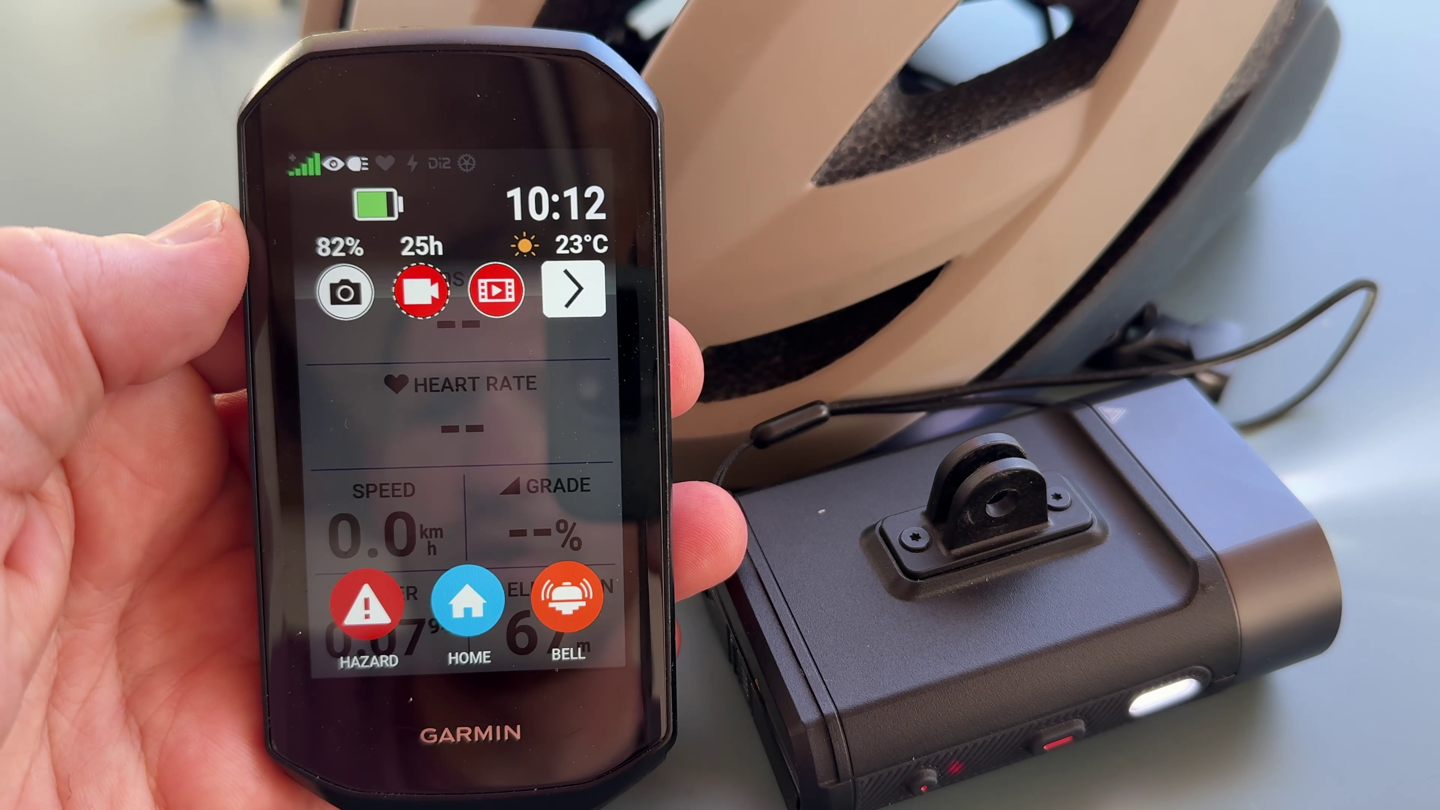
These buttons do three core things: Take a photo, Save a quick clip, Mark the entire ride to be saved. If however, you tap that little arrow at the right, you’ll get this screen:
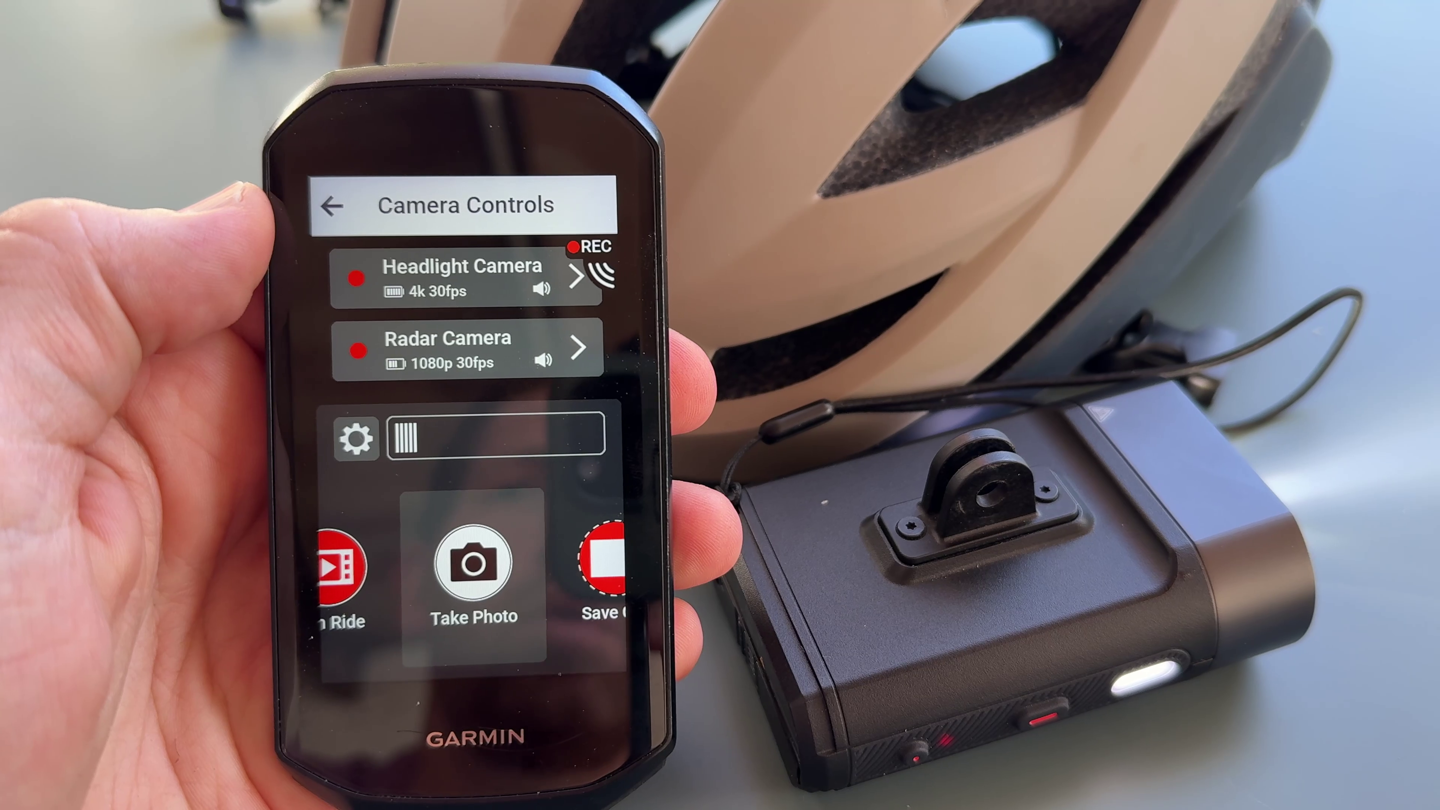
Here you can see the current battery level, the mode you’re in, and whether or not it’s actively recording (for both front and rear camera). You’ll also see the total time recording in ride-filmed mode. One of the things that’s overly confusing here is that Garmin separates out ‘Recorded’ from ‘Saved’. To be clear, in plain English, every ride is saved. But in Garmin-parlance, ‘Saved’ has an explicit meaning also known as ‘Locked’, which means it won’t be overridden if you run low on space. Further ‘Saved’ clips/rides also will upload to Garmin Varia Vault.
If you were to tap either of the two camera options above, then you’ll see more camera-specific settings for the Varia Vue, but not the light settings. Also, if you were to tap those four lines next to the timer, then you’d get the ability to customize the big three buttons displayed on the home page. I know, this makes your head hurt. Mine too.
The good news here is that once you realize you just need to simply tap that YouTube-looking icon (for ‘Film Ride’) at the start of every ride to ‘Save’ the whole thing, including uploading to Garmin Varia Vault, then life is grand. I’m sure Garmin would prefer you didn’t do that because it’ll take up a lot more storage on their service, but I’d also prefer Garmin offer a reasonably-priced and logically designed cycling-focused pricing plan for Garmin Vault. Perhaps they’ll find a compromise, but more on that in the Garmin Vault section.
Now, you’ll also have noticed back on the ride screen there’s a little recording icon in the upper right corner. This actually displays in one of two ways:
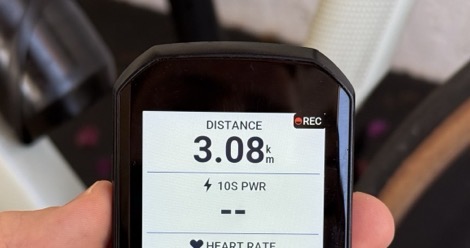
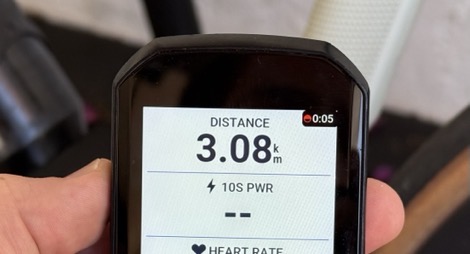
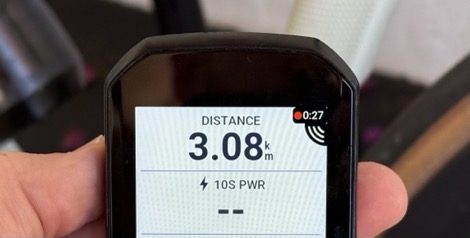
The first way, with ‘REC’, means that the Varia is recording in the background, but not marked as protected/saved/locked. The second method with timer means & rear-camera RCT-715 are recording. And finally, the half-red-dot means that only one camera (e.g. rear Varia camera) is recording. Versus a full dot means two cameras (front and back) are on/enabled. The half/full time dot applies to both REC and timer displayed. The timer shows how long I’ve been recording that saved clip for.
Finally, in the event you get into a crash, it’ll trigger automatic saving/locking of the footage. Thankfully, I haven’t had a car hit me in a while, so I wasn’t able to test that on this product release.
Garmin Varia App Options:
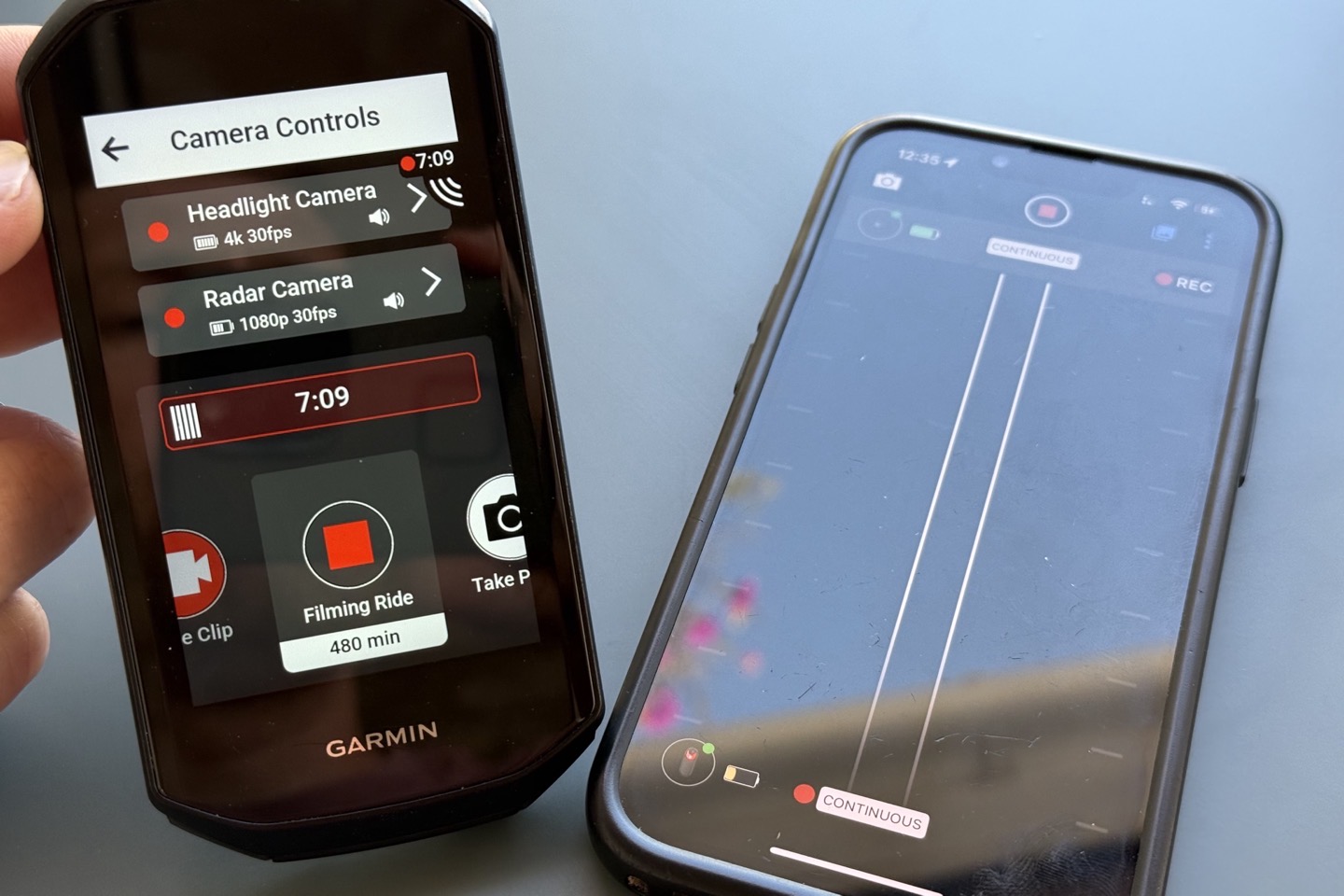
The Garmin Varia Vue uses the same Garmin Varia app as the Garmin Varia RCT-715 rear camera-radar, as well as their base radar units. It’s now been updated to pair to the Varia Vue front camera-light, as well as adding support for the Garmin Vault pieces within it.
You’ll start by pairing the camera to the app, which happens via Bluetooth, but also for some functions via direct WiFi connection to the unit (such as using the camera preview function, as well as viewing footage). Once paired up, you’ve got a few options. First, is the main page for the Varia Vue:
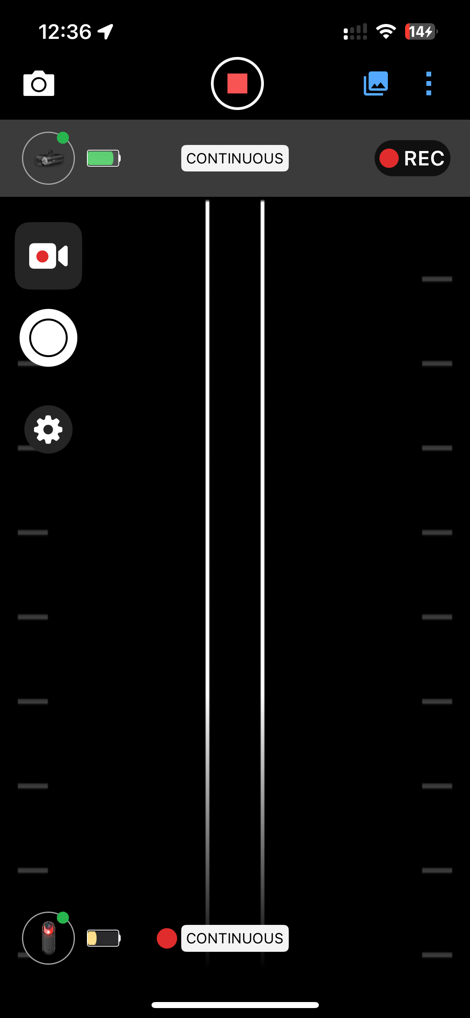
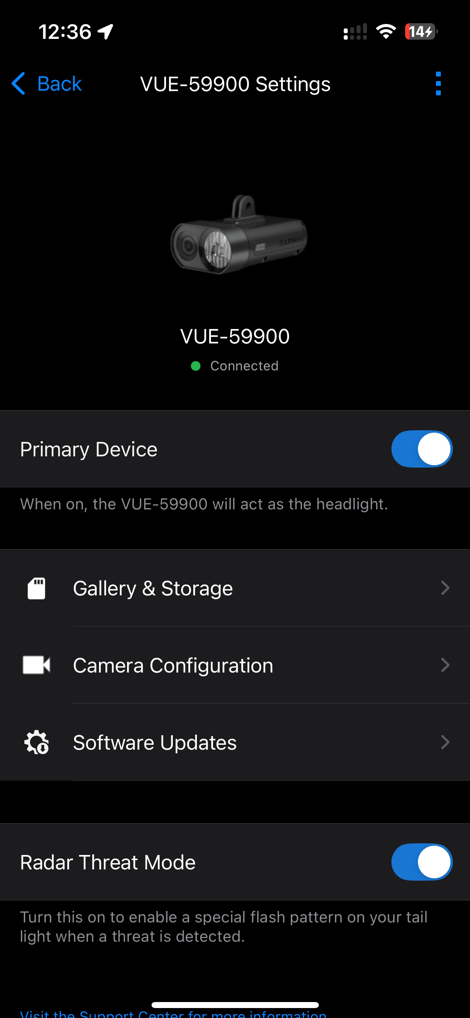
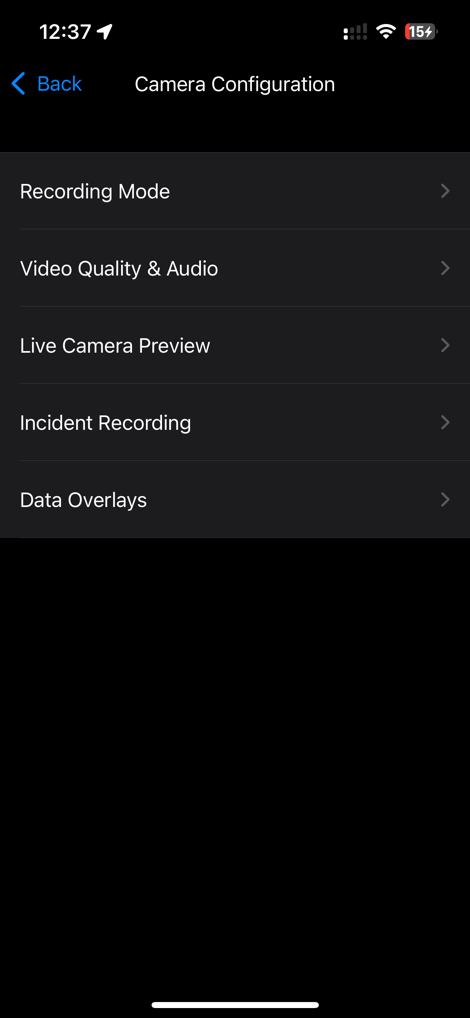
Within that, you can tap to open the camera configuration, gallery, or software updates page. Once in the camera configuration page, you can specify the recording mode, the video quality, incident recording options, and data overlays.
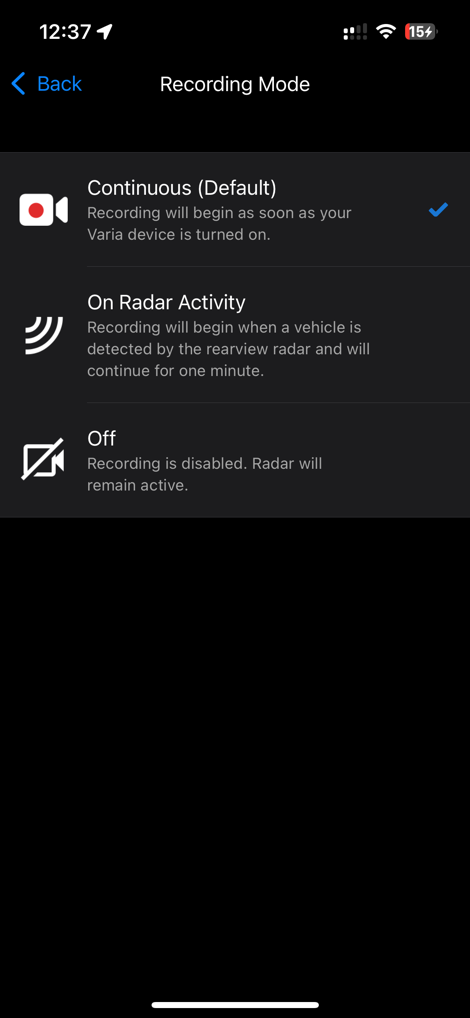
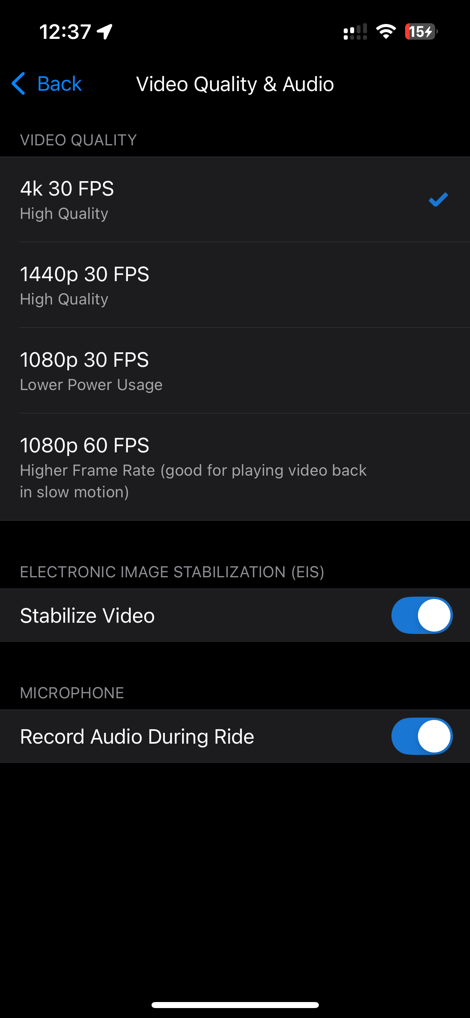

Note that for data overlays, when any of them are enabled, the Garmin logo is also enabled automatically. You can do a clean (non-overlay) option, but all options with date/time, GPS, or speed, will also add the Garmin logo. I don’t personally care about that, but I know some people do.
Here’s how an overlay looks with everything enabled. I’ve placed an arrow pointing at the speed, with the GPS coordinates to the left of that.
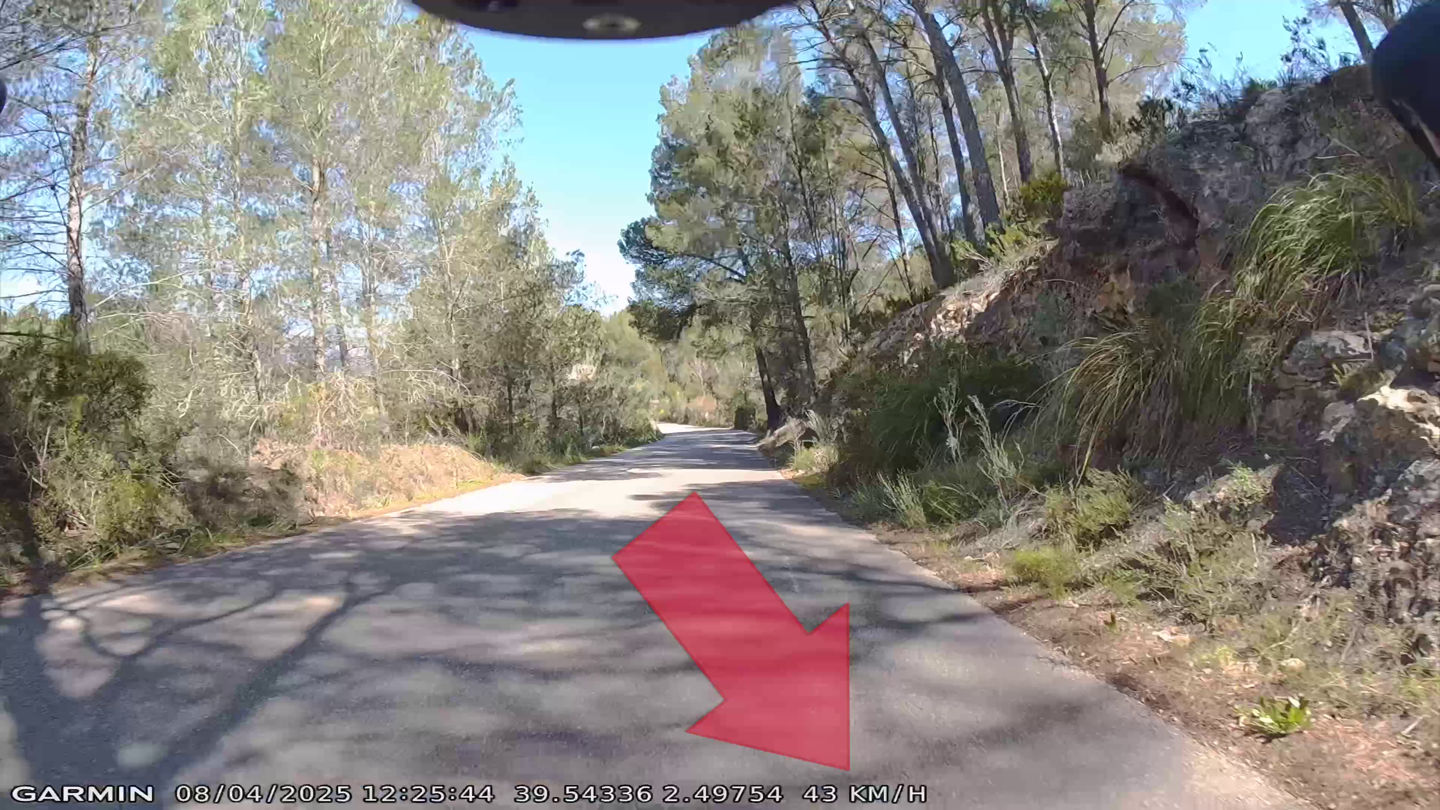
You can use the Live Camera Preview option to see what your camera is seeing. While this is functional, for reasons beyond explanation, Garmin has added a vignetting effect in this preview window (basically, a black vignette on the upper edges, only in the preview, not the recorded footage). Why on earth would you add this? It makes it impossible to tell whether or not the upper portion of the image may be blocked by the front of a mount/etc… Below, against a perfectly white wall:
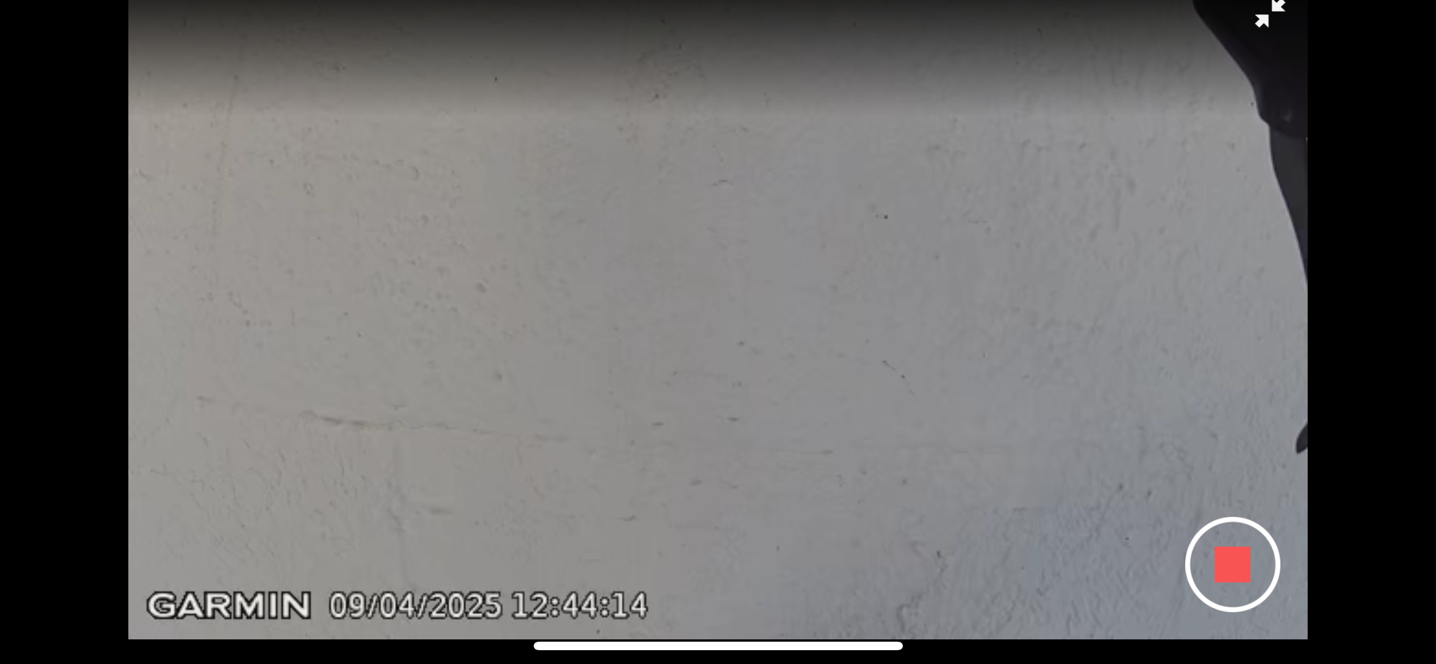
The other slightly disappointing thing is there’s no option to flip the camera orientation. That might sound funny, but the reality is many e-bikes don’t actually use standard round handlebars, and more specifically, don’t have great GoPro mounting options either. For example, on the Canyon commuter eBike I have, there’s no way to mount the Garmin mount, or any other round-handlebar mount. Garmin says this is because they have a cut-off beam to protect vehicle drivers and pedestrians.
Fine, instead, I’ll use a simple GoPro clamp mount and kinda-sorta make it work. But it’s not ideal.
Next, within the gallery you can look at footage on the unit. The unit has basically two core buckets of footage: Locked, and Unlocked. Locked footage is footage that you’ve either manually saved, or triggered by an incident. Whereas unlocked footage is that which can be deleted to make space. There’s also the ‘Downloaded’ option in the app, which is for footage you’ve downloaded to the app.

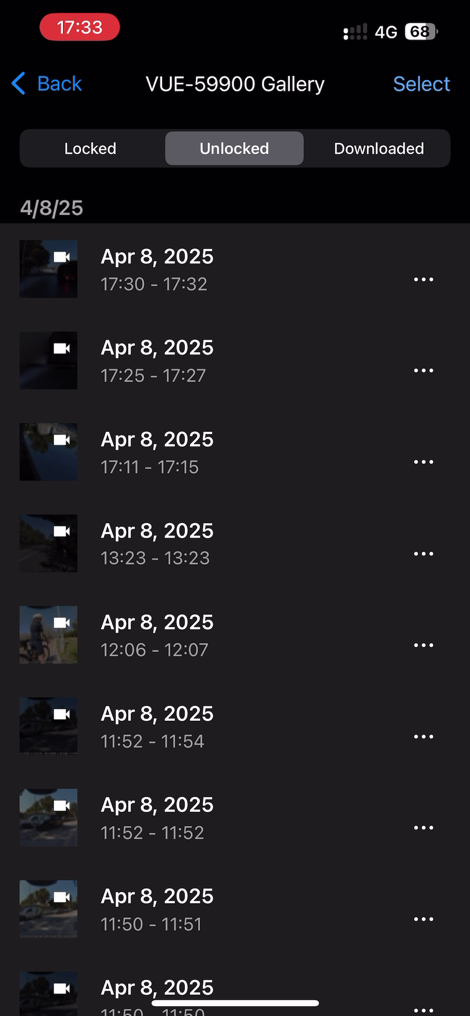
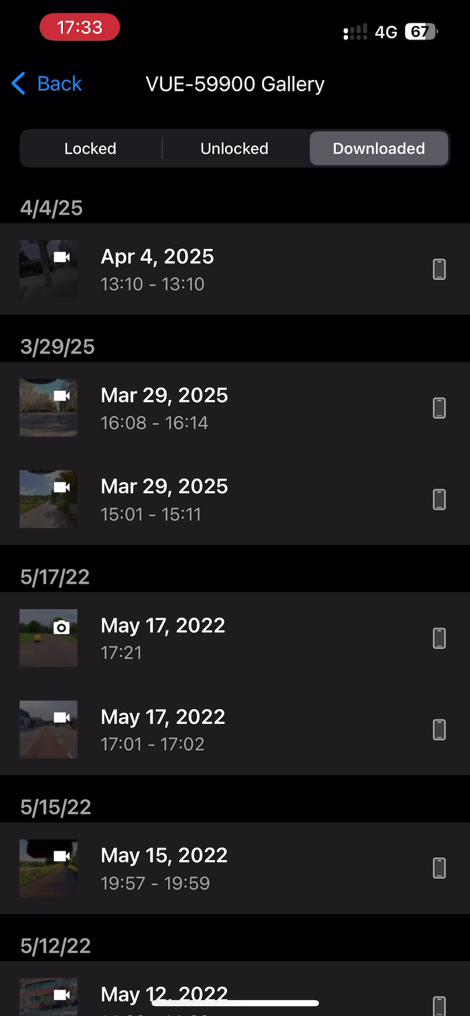
When you choose to download footage, it’ll download footage snippets in 10-minute increments, as seen on the disk:
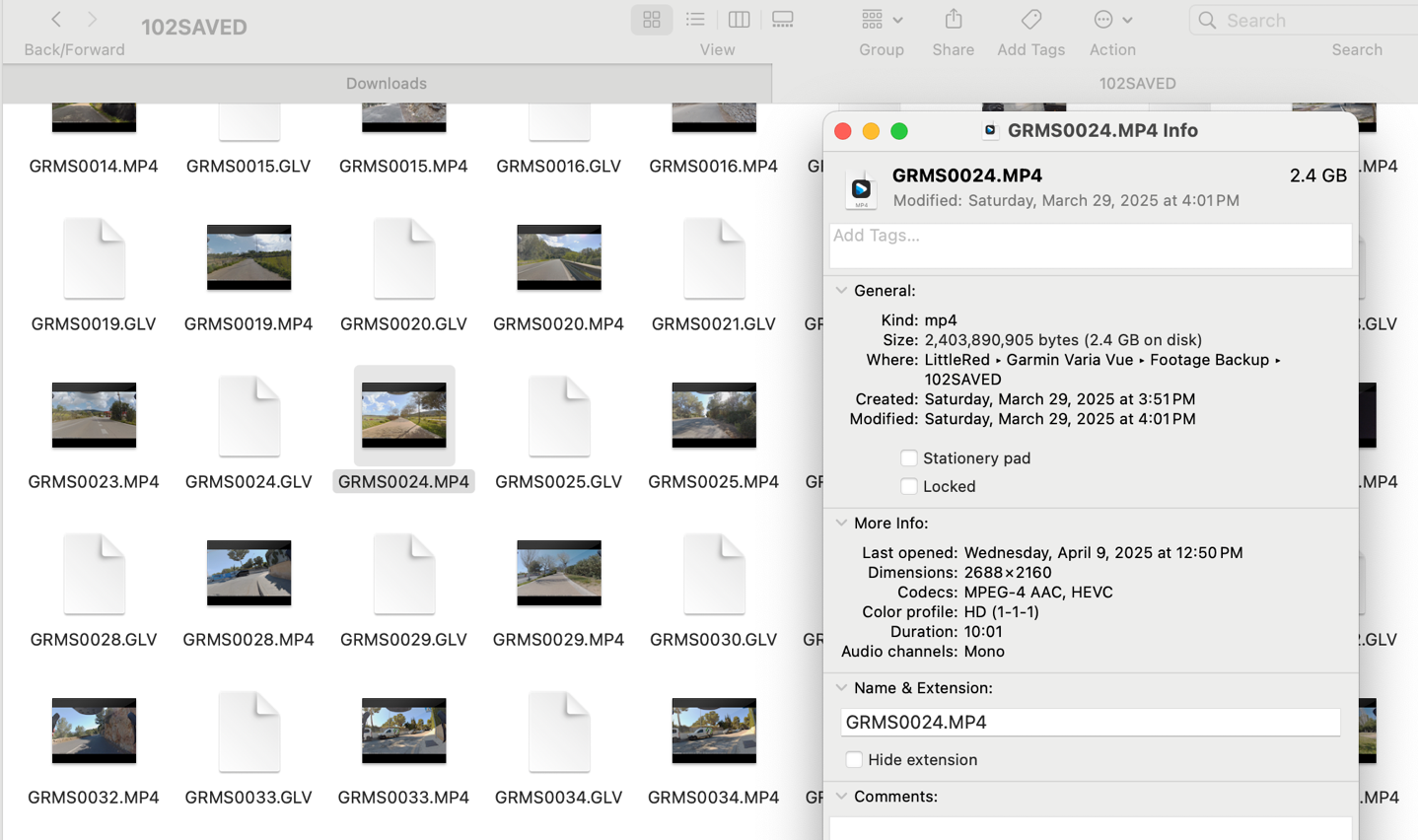
Once downloaded, you can then see the full quality, versus the lower preview quality option. Downloading clips does seem to take quite a while, especially given the relatively low bitrate of the camera. Once downloaded, you can save it to your camera roll, upload it to TikTok, or print off a screenshot to your dot matrix printer. Your choice.
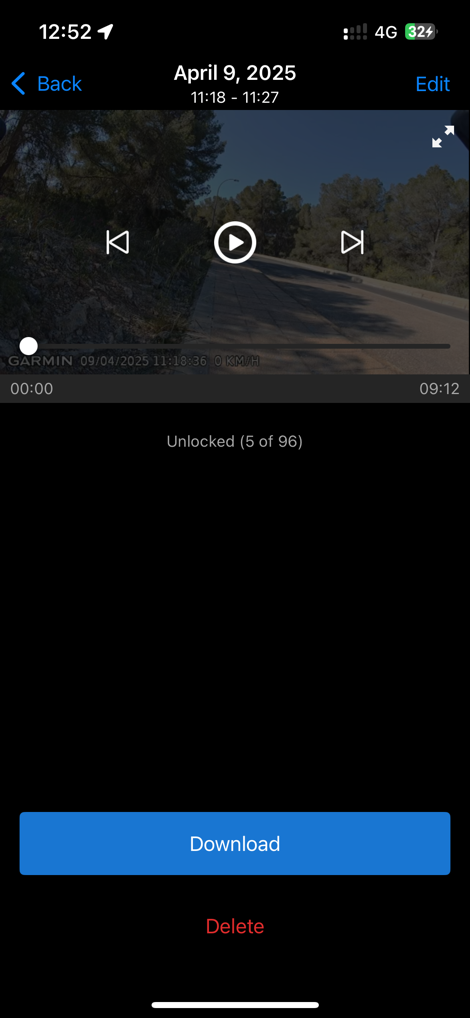

You can also select to upload it to the Garmin Vault, but more on that in a second.
Note that the Garmin Varia Vue doesn’t seem to have a specific MicroSD card size limit. In my case, I used a 256GB card, and my friend DesFit used a 512GB card. Garmin did note though that with a much larger card (like the 512GB one), the app will be slower as it tries to enumerate all the footage each time. This is sorta the same issue that you’ll see on a jam-packed 512GB card in a GoPro/Insta360/DJI action cam. Still, I’m a fan of just going big on microSD card size, given how cheap they are.
Finally, it’s worth mentioning that if you have a Garmin Varia RCT-715, you’ll want to update the firmware on that unit to the new firmware that just came out yesterday. It doesn’t give you new features per se, but it does essentially sync the RCT-715 with the Varia Vue, keeping those two units connected and synced together from a footage timecode perspective.
Garmin Vault:

Garmin Vault is Garmin’s online cloud platform for storing footage from their various vehicle dashboard cameras, and now also the Varia Vue camera. I’d presume at some point they’ll update their rear-facing Garmin Varia RCT715 camera with a model that uploads to Garmin Vault as well (I confirmed with Garmin that the current version will not be getting an update to sync to Varia Vault).
When I first heard about this, I was pretty excited about it. The concept being when you charge/plugin your camera, it uploads your footage to the Garmin Vault cloud automatically. In my mind, it’d be very similar to GoPro’s cloud subscription service, which operates the same way: You plug in your camera, and boom, it syncs every bit of footage & photo in full resolution up to GoPro’s cloud, kept there forever, for just $49/year.
Except, that’s not how Garmin’s Vault operates.
To begin, Garmin’s platform cost $99/year. Worse yet, it doesn’t sync all your footage.
Instead, it will *only* sync those bits of footage that you’ve specifically set to be saved, or those that were triggered during an incident. Saves can be triggered either during a ride, through your Edge computer, or afterwards with your phone. Once you’ve done that, then it’ll upload when plugged in, on WiFi (showing alternating blue & green lights):
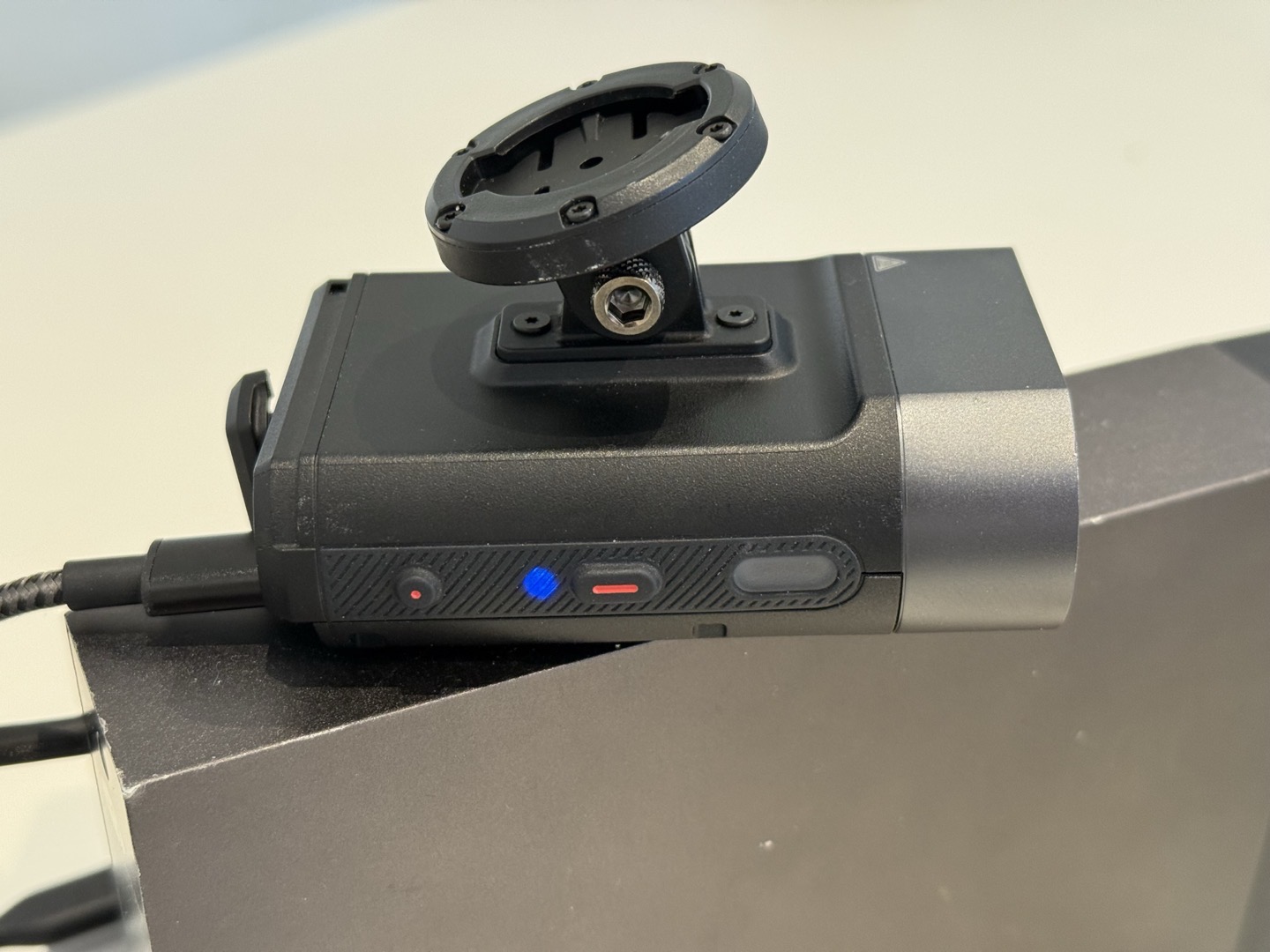
At that point, you can open up the Varia Vue app, and within that, select the Vault to select a clip. By selecting a clip you can preview it live, or save a full res copy.
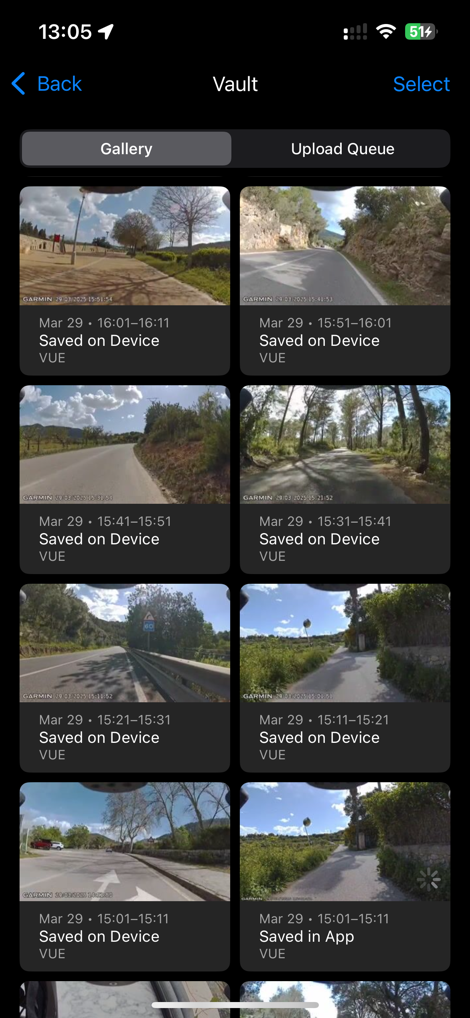

Further, you can send a link to someone, which will then download it from the Garmin Varia full (or, play it in an online player):
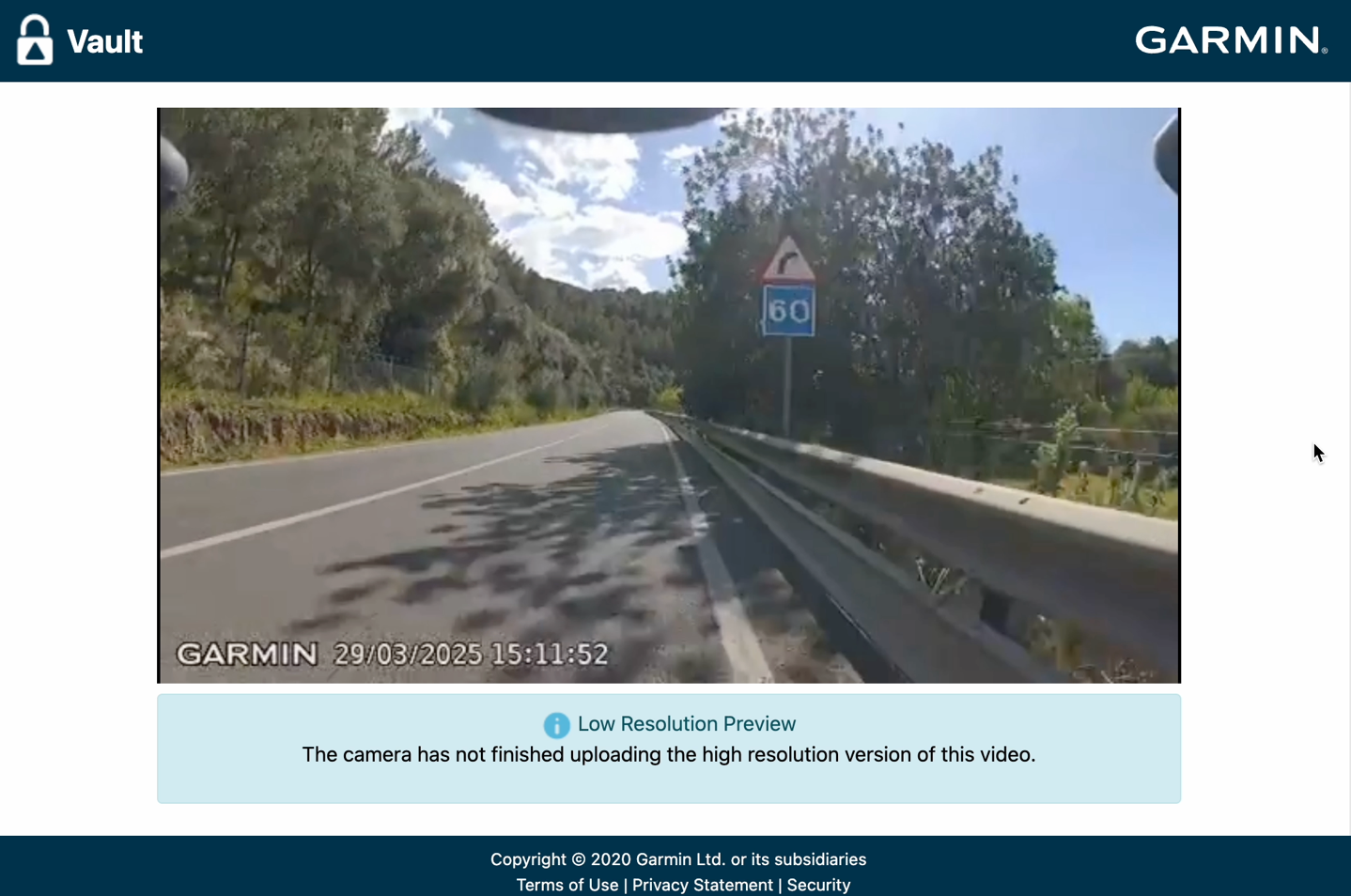
Like most things that seem to originate from the Dashcam world at Garmin, the site feels horrifically dated (after all, they haven’t updated the Copyright date in 5 years, seen above).
Nonetheless, my issue here isn’t how dated this feels. Rather, it’s the price just doesn’t make sense. Paying $99/year to save *MAYBE* a few minutes of saved clip footage just isn’t logical. Especially when you compare to GoPro’s $49/year for everything I record automatically, in full 5.3K resolution at 10-bit, with all the high fidelity trimmings. Again, I note that Garmin doesn’t upload all your footage, just the bits you selected to save. So if you simply went out and rode each day without pressing anything, nothing would get uploaded to Garmin Vault.
In other words, Garmin cycling needs to sit down and make the Garmin Vault appealing to cyclists. As of right now, it’s a hard non-starter. Which is a shame, cause I was really excited about the concept until I started using it.
I will note though that in the event you already have a Garmin Dashcam device, your subscription will cover all your footage. You can have multiple devices linked to that Garmin Vault subscription, including both cycling and vehicular devices.
Daytime Footage & Readability:
Now, the first thing I wanted to note here is that all of my footage is shot in supposed 4K, with Garmin’s EIS stabilization turned on. EIS is what every action camera on the market does to make things stable. It’s just that they’re all way better at it.
But what’s left unsaid until you read the manual, is that Garmin actually drops the resolution a ton when you select EIS on. Here’s the chart:

I’d really struggle to see how we still call this 4K when it’s at 2,688 pixels. I mean, that’s a pretty massive stretch, and a huge bit lower in resolution. Typically, for most (all?) action cameras, you oversample, so you basically start off with a 5K or 6K potential image size, and then do your stabilization within that, bringing you down to 4K. Whereas Garmin apparently started at ~4K, and then cropped into that.
In any case, let’s look at footage. Note that I have all this in my video review at the top too, which is obviously…well..video, as opposed to stills.
Nonetheless, in every scenario during daytime, I could easily make out the plates.
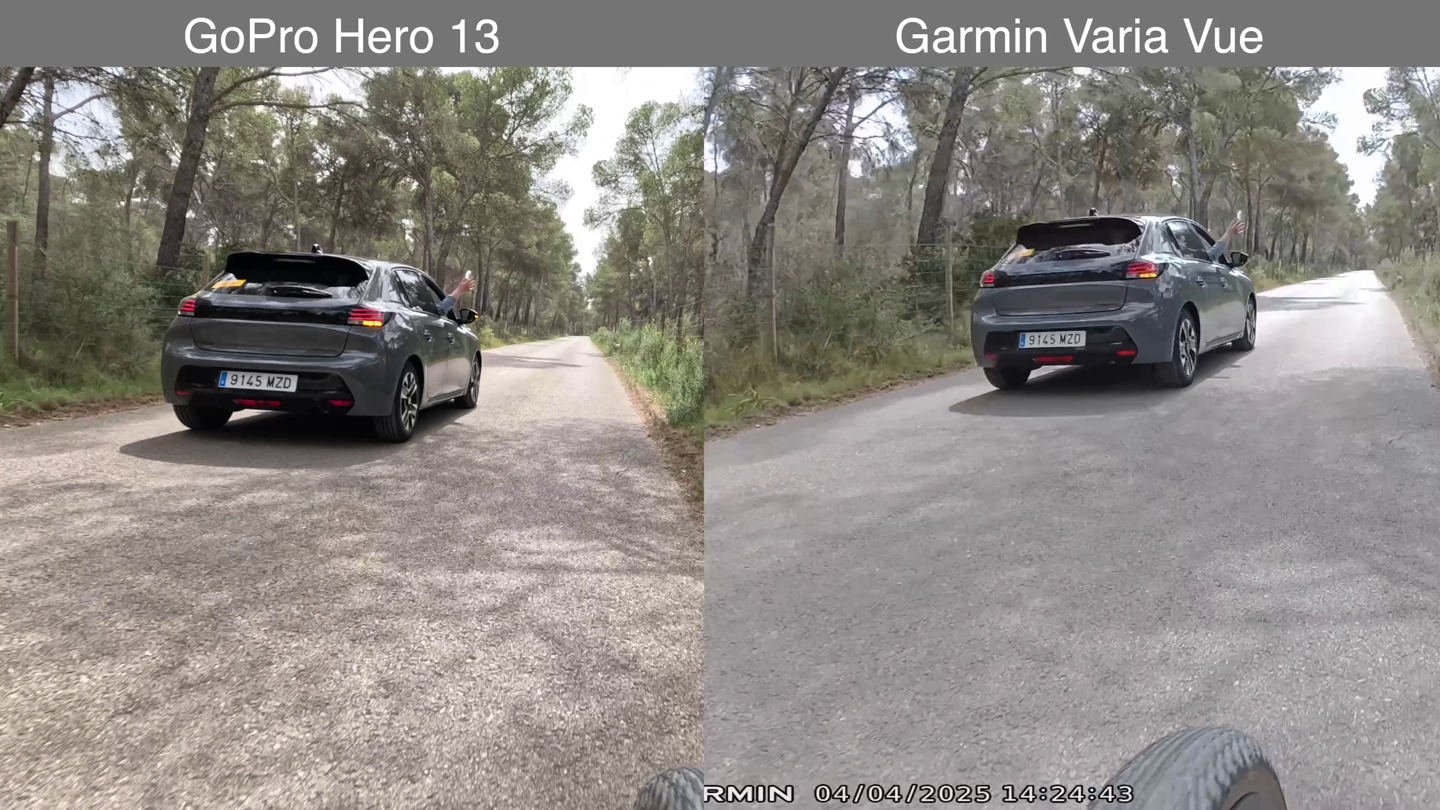
Again here:
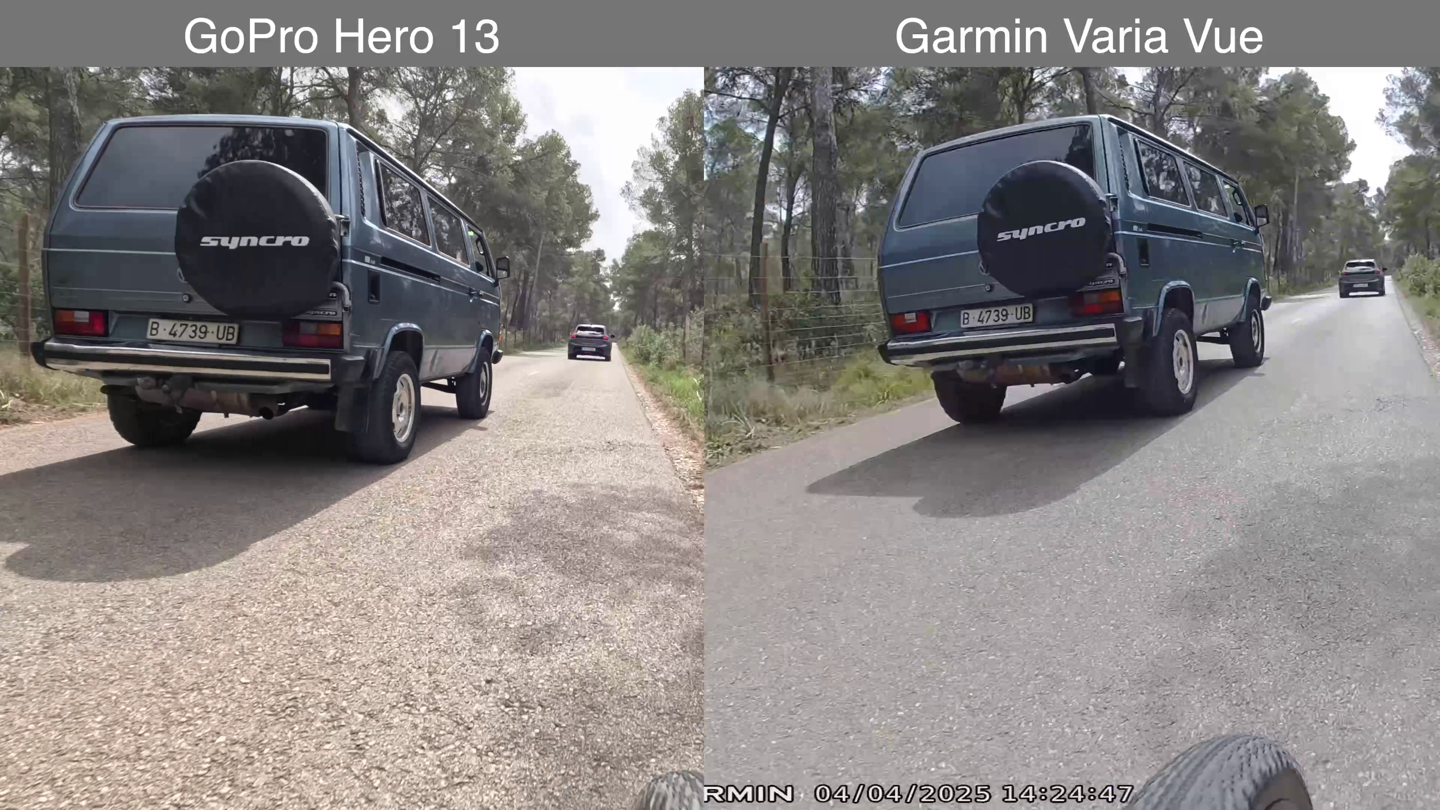
However, the stability of that footage was pretty rough. An action camera this is not, and more notably, it seems clear that Garmin is once again just trying to rehash some of their older dash cam sensors, as it’s just not stable at all, especially for having EIS enabled. This is like 2015-era EIS, and even that still probably beats it. A $179 GoPro Hero 4K also easily beats this in terms of stability and clarity during daytime usage.
Now, I already looked at night footage up above, so I won’t rehash that again in this section.
Garmin Varia Vue vs Cycliq Fly 12 Sport:
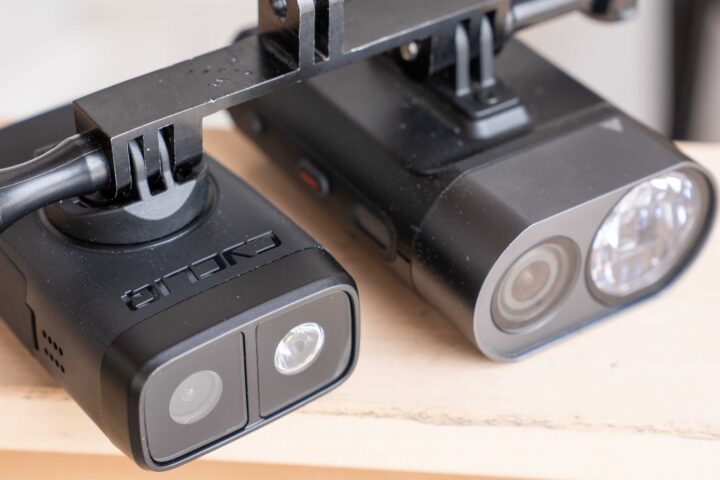
Now, Garmin isn’t the only game in town here. In fact, Cycliq has been in this realm for over a decade, with their Fly12 front-facing camera and light. Of course, that’s a company that has had some wobbles and substantial resets, but has more recently seemed to stabilize a bit. Back in the early days, the original models actually had many of the same ANT+ Light Control features, but during one of those management resets, they actually (bafflingly) got rid of all connectivity on their models. Thus, you can’t actually download your footage on the Fly12 Sport to your phone wirelessly, you have to remove the card. I’m not kidding.
Still, despite the lack of ANT+ and WiFi, the most current edition (Fly12 Sport) is much cheaper than Garmin’s $549 offering, coming in at $319USD. Historically speaking, the Fly12 footage has always kinda been so-so, in the same way that Garmin’s Varia Vue footage is so-so. I bought one a few days back, and it shipped out yesterday. It appears to be headed (as usual) for being stuck in Spanish customs. So…once I untangle that, I’ll get a proper comparison together. [Update: Somehow got through without issue, woot! Photo proof above. More updates post-riding, soon.]
For now though, here’s some of the key spec differences:
– Garmin has longer battery life than Cycliq: In the case of Garmin battery charts, they basically beat Cycliq in every light/camera setting combination. Cycliq only lists battery time in 1440p (slightly above 1080p), and even in that, Garmin beats it. Of course again, Garmin is far more expensive.
– Garmin has 4K, Cycliq tops out at ~2.5K: That said, in stabilized footage, both companies are at the same ~2.5K. So I’d consider this a wash in terms of specs. Both companies try and claim 4K specs, but realistically both companies fall short of the specific resolutions action cam companies would call 4K.
– Garmin has ANT+ Lighting control, Cycliq doesn’t: This is compatible with Garmin/Wahoo/COROS/Hammerhead, and other bike computers, for automatically turning on/off the the camera/light.
– Garmin has camera controls on some Edge units, Cycliq doesn’t: This is for the Garmin Edge x40 and x50 series units.
– Cycliq can overlay data from Strava on footage, Garmin can’t: This is *FAR* better than what Garmin can do, and the kicker is, Garmin actually had this functionality in their now defunct Garmin VIRB app. Note that in Cycliq’s case though, you do need to manually pull the card and download footage instead…which makes this a lot more clumsy.
– Cycliq is $230 cheaper than Garmin: This is pretty self-explanatory.
– Cycliq includes a 64GB microSD card, Garmin includes nothing: This is a bit petty on Garmin’s side, especially since the retail cost of a 64GB microSD card is $13, and certainly much cheaper in bulk.
– Cycliq weighs quite a bit less 148g, whereas Garmin weighs 199g: Again, self-explanatory.
– Garmin’s light goes to 600 lumens, Cycliq goes to 400 lumens: This isn’t really an issue during daylight riding, since you’d use a lower light setting, but is notable at night, depending on your road lighting.
– Both companies allow date/time/GPS overlays on the footage automatically: This is pretty straightforward and similar.
– Both companies include an out-front mount: And both companies leverage the GoPro adapter/mount systems:
So, in short, Garmin is basically upcharging in a relatively logical way for all the extra features, most notably the ability to wirelessly download footage, the ability to control the lights and camera from a bike computer, the 50% brighter light, and the far longer battery life. Whether any of those things actually matter to you, especially in daytime riding conditions, is probably the more valid question.
For me, I think the wireless download bits is actually probably the most notable/practical difference. I fail to understand why any sports/action/etc camera company in 2025 (let alone years ago), would remove WiFi from their product. This isn’t 2010. And likewise, this isn’t a $100 product. On that principle alone it was hard clicking purchase on the $319 Fly12 Sport. Still, if you plan to use it purely for post-crash type bits, then I suppose it’s only gonna be an issue once.
Again, more in the future once I untangle customs on the Fly12 Sport.
Wrap-Up:
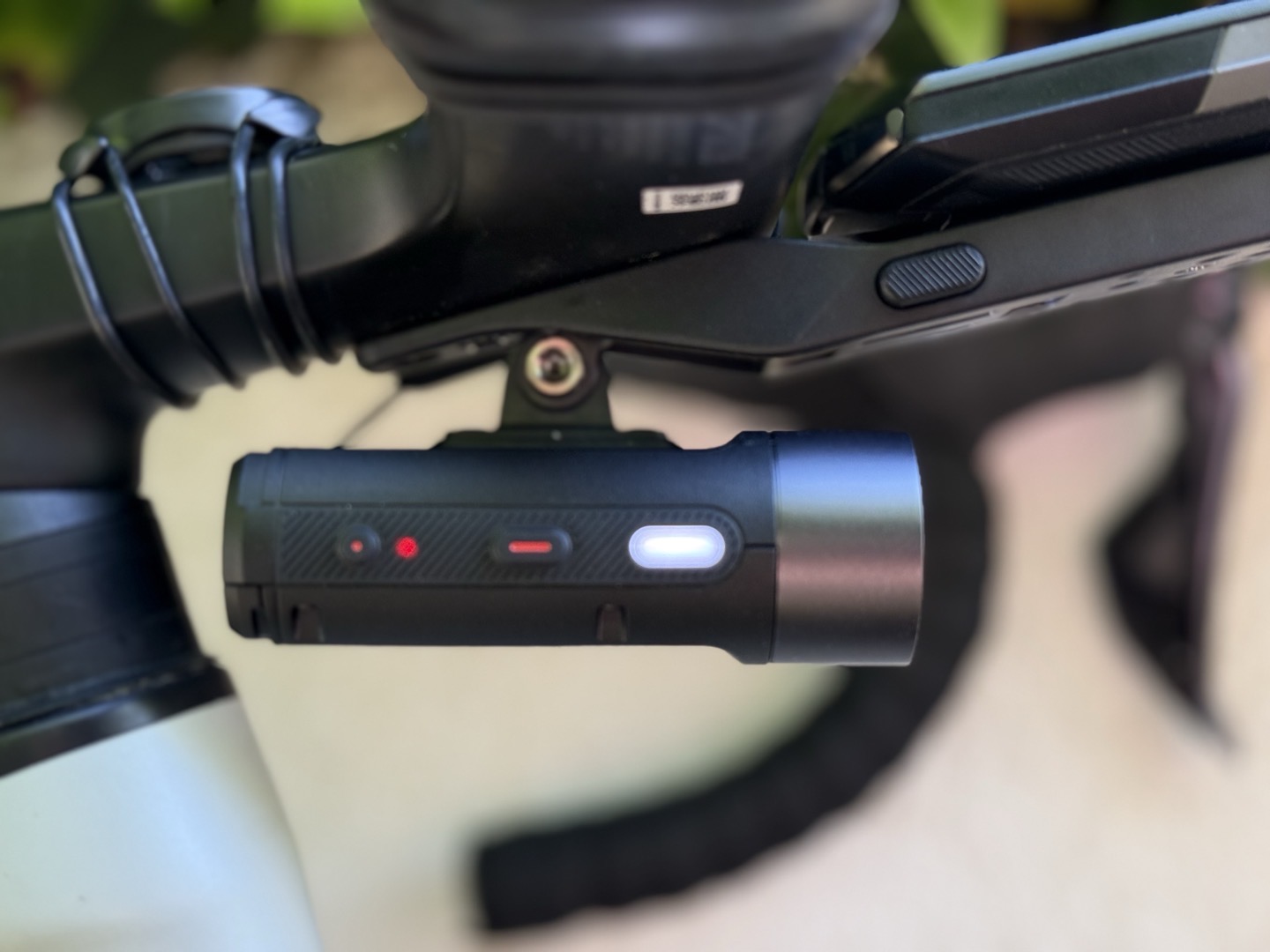
The Garmin Varia Vue is a good device that does what you need it to do, but it’d be hard to call it an amazing device. In many ways, it’s a prime example of what happens when there’s limited competition in a given category. The closest competition is the Cycliq Fly12 Sport, but there are many gaps in that comparison. Instead, I see that more as the budget option here (as crazy as it is to say $319USD is the budget option).
Starting off with the good bits on the Varia Vue, the light is insanely bright, with a very large illumination area. It’ll easily illuminate the road ahead of you at night, while providing very clear rider visibility during the day (even on the low setting). The different light modes should cover pretty much any configuration you want (either solid or flashing). Next, the hardware case is solid. I’m reasonably sure that in a crash, this would actually hold up really well. Obviously, nothing is guaranteed, but this feels far better built than most action cams. Likewise, the GoPro mounting clip design works well, and is replaceable in case you somehow break it.
So then, moving towards lesser things. The camera footage in faux-4K is perfectly acceptable for picking out license plates in daylight conditions. In my many hours of footage, every single license-plate that went by in either direction (oncoming or overtaking) was readable. Easily readable – something that wasn’t always the case with the Garmin Varia RCT715. However, stabilization remains pretty crap. While Garmin is doing some electronic stabilization, it’s horrific even by 2015 standards, let alone 2025 standards. Still, the key thing – the license plates – are perfectly fine. As for night footage, the license plates are unreadable in all of my tests. Half of the time this is because the light is so bright that the camera’s poor dynamic range can’t deal with the bright spot (in all those scenarios, it was readable with a 3-year-old iPhone 13 Pro shooting concurrently). The other half the time, the car was simply moving too fast for the low frame rates and faux-4K quality level this has (30FPS in 4K mode).
Finally, we get to the bad bits. Somehow, I thought after the RCT-715 debacle years ago, that Garmin would substantially improve the Varia app and overall usability. And unfortunately, that didn’t happen. It remains clumsy, at least compared to 2020-2025 norms on software UI design. Meanwhile, the Varia Vault integration that I thought would be amazing, is laughably overpriced at $99/year to save a few minute’s worth of clips per year. Somehow, this makes Garmin Connect+ look good. At least, in both cases, you don’t need to use it.
Ultimately, despite the Varia Vue’s user interface design and cloud service shortcomings, as a safety device it works exceptionally well – namely, the hardware. The light itself is brilliantly bright, the unit isn’t all that heavy, the battery life exceeded specs (substantially), and the license plates during daytime are easily readable. I just wish Garmin would take the rest of the software experience from ‘passable’ to awesome.
With that, thanks for reading!
Found This Post Useful? Support The Site!
Hopefully you found this review/post useful. At the end of the day, I’m an athlete just like you looking for the most detail possible on a new purchase – so my review is written from the standpoint of how I used the device. The reviews generally take a lot of hours to put together, so it’s a fair bit of work (and labor of love). As you probably noticed by looking below, I also take time to answer all the questions posted in the comments – and there’s quite a bit of detail in there as well.
If you're shopping for the Garmin Varia Vue or any other accessory items, please consider using the affiliate links below! As an Amazon Associate I earn from qualifying purchases. It doesn’t cost you anything extra, but your purchases help support this website a lot.
And of course – you can always sign-up to be a DCR Supporter! That gets you an ad-free DCR, access to the DCR Shed Talkin' video series packed with behind the scenes tidbits...and it also makes you awesome. And being awesome is what it’s all about!
Thanks for reading! And as always, feel free to post comments or questions in the comments section below, I’ll be happy to try and answer them as quickly as possible. And lastly, if you felt this review was useful – I always appreciate feedback in the comments below. Thanks!



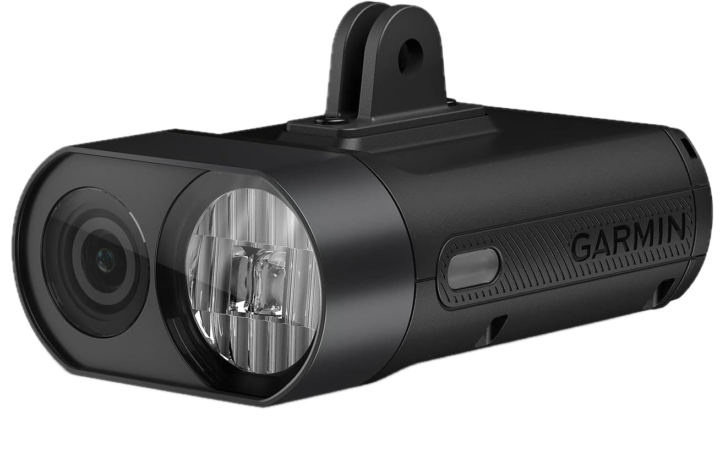


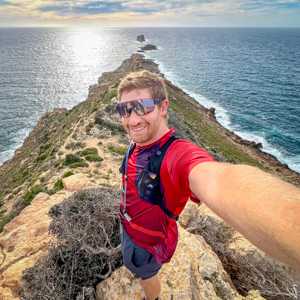





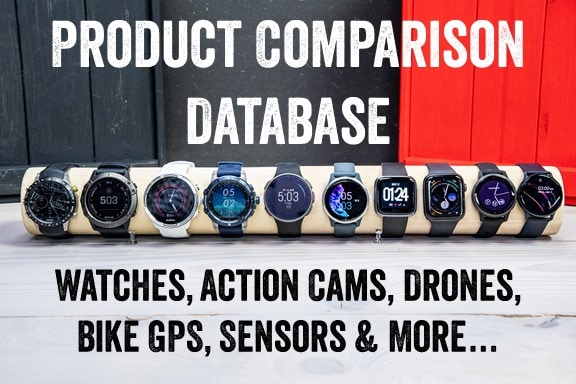
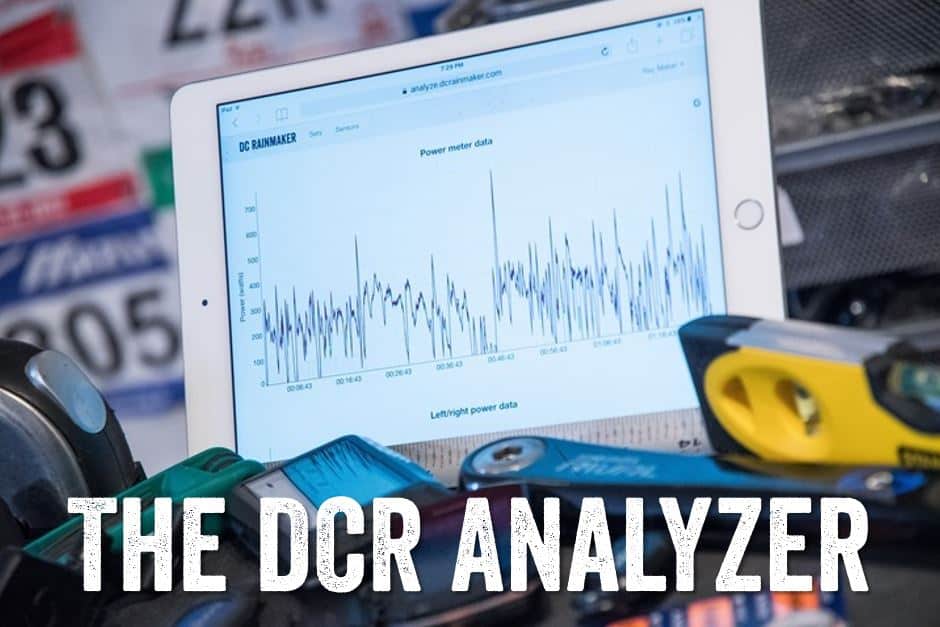

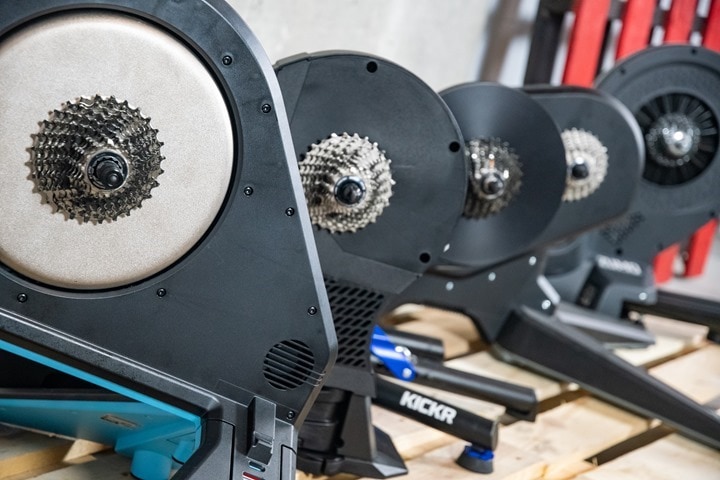
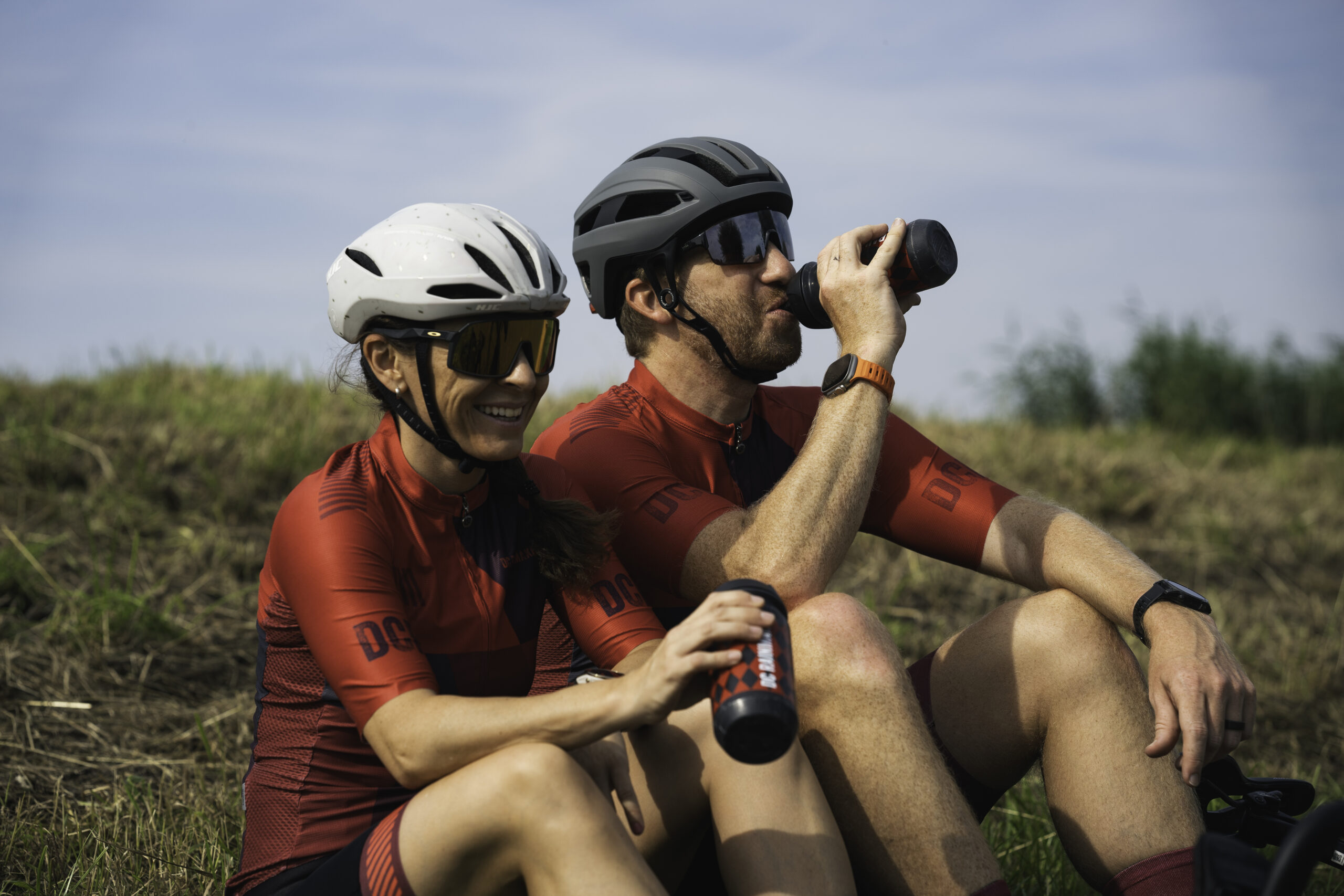
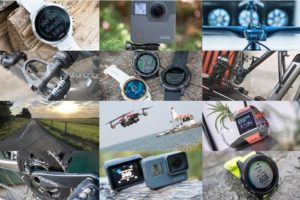
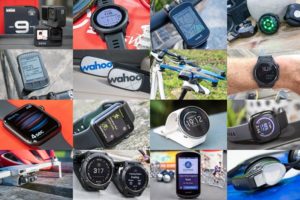

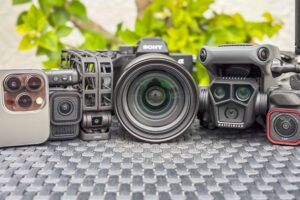

first
Does it overlay simple data like power? You’d figure that would be easy integration with their power pedals.
No, unfortunately no overlays like that. Realistically, given how bad the stabilization is, nobody will really want to watch that footage for anything except an incident.
I’ve always wondered why Garmin doesn’t just buy Cycliq. Based on the review, it appears to be only on par with the Cycliq at a much more expensive price. The rear Garmin Camera looks inferior to Cycliq’s model. Cycliq is a listed business in Australia, and is only worth $1m AUD (about $600k USD).
Check out the comparison section above, there’s quite a few more differences. Whether or not they’re worth it to people is the big difference.
Honestly, if things continue the way they are going for GoPro, Garmin may have an opportunity to just buy them instead.
Garmin already did action cameras (VIRB). I doubt they want to get back in.
I had Cycliq front and rear. They died without warning a few months in. Absolute garbage, and their software was horrendous too.
i bought the fly12 – when it worked it was super – but too often it didn’t despite numerous resets via their support and even a return to australia. never managed to get battery life much beyond 1.5 hours. v disappointing – worst bit of tech i have owned – cant make my mind up if the Garmin will be the answer or another step into disappointment
Yeah, I tried really hard with Cycliq. Went through, 4 of the rear, two front, always hoping the promised increased ruggedness of the newer models would work. It never did. Sometimes they were good about warranty. But they lost me when they rejected a warranty attempt because the picture of my rear camera I sent in showed it with some spots of tire sealant and they said I’d abused it.
We are still waiting for the perfect camera+light system. This Garmin is disappointing, but may be “good enough for now,” as at least Garmin has a strong reputation for reliability and honoring warranties.
The other difference is that while Garmin and bugs do go hand in hand with Cyliq you are opening yourself up for poor build quality, terrible warranty policies and horrible customer service.
“The Garmin Varia Vue is a good device”
As noted, there’s a difference between good and great.
No I meant you missed the a, sorry I wasn’t clearer. Great write-up as ever though.
Ahh, sorry, gotchya, thanks!
Is the battery replaceable on this? I have owned both a front and rear Cycliq unit and for the price would never buy one again due to battery issues. I don’t see paying $500+ for a throw away non repairable unit.
Not end-user. Perhaps via Garmin support.
Agreed on never buying from Cycliq – I have one of their rear camera/lights and the seat post mount failed (split in 2 down the middle, light went bouncing down the road but was fine) at about 2 years. Emailed customer support explaining what happened to see if I could get a replacement (and made it clear I was happy to pay for a replacement mount) and was told that they didn’t sell these separately but they would give me 20% off a replacement camera/light. Ignoring the cost aspect that is SUCH a ridiculous waste of resources. I managed to bodge something together and the bodge is still holding something like 6 years later and the unit still functioning. So, “good” in that the product has lasted well but bad, so bad, in terms of what it says about both the company’s approach to customers and use of resources / saving on waste.
Few years back I was using Garmin Virb Elite front cameras, they were pretty advanced and good quality overall, however I think Garmin missed the camera train there not trying to improve and integrate these with the lights/radar line.
Love the concept, but at a listed price of AU$999 it is a joke. I’ll stick with my UT800 and GoPro
$999 in Australia is criminal.
$549USD is $911AUD. So $999AUD isn’t that much higher relatively speaking, considering historically speaking there’s also various additional import tariffs (beyond whatever messiness has been triggered this past week).
It’ll be over a grand in NZ then. Laughable.
How has Garmin still not released a USB-c version of the 515?! (Doesn’t this violate the EU USB c requirement?)
I don’t need a camera in my radar. I just want a longer battery life and Garmin level of reliability and to not deal with micro USB anymore.
My understanding of the EU requirement is it’s limited to various categories of devices (hence how we got an Edge 530 USB-C, amazingly enough), but not a Varia radar.
Specifically, the EU directive covers:
“The rules of the Common Charger Directive will be applicable for handheld mobile phones, tablets, digital cameras, headphones, headsets, handheld videogame consoles, portable speakers, e-readers, keyboards, mice, portable navigation systems and earbuds, as of 28 December 2024. These rules will be applicable for laptops as of 28 April 2026.”
So basically, Edge falls under ‘portable navigation system’, but Varia radar doesn’t actually fall within any of those above categories.
100% agree.
Hoping that Garmin has such a device to reveal this week, and another review from Ray forthcoming.
Any hints, Ray?
I have a Cycliq Fly12. Copying video to my phone is not something I would consider doing so I don’t care if I can’t do it wirelessly. I just plug it into my computer with a USB cable to get footage off of it. I bought the Cyliq last year when my 1st gen Virb was just getting too long in the tooth and there was nothing else in this space to consider. The video quality is better than my Virb but that isn’t too difficult to achieve.
“I’ve ben putting” -> “Ik ben putting”? 🙂
Where did you get that GoPro adapter under your integrated mount? Is that the Canyon light mount? Thanks.
So that’s the standard Canyon light mount, and then combined with this little 8EUR adapter: link to lupine-shop.com
I do wish Canyon just had a better native solution. This ends up mounting the GoPro/Varia a little bit further back than I’d prefer, just slightly. But, it works. Been using it without issue since last summer.
Amazing. Been looking for something like this. Thank you!
Have you just piggybacked it on top of one of the two mounting holes that secures the garmin/light mount to the stem? Do you need a longer bolt?
Yup, exactly.
I didn’t need a longer bolt. It appeared to me that bolt was already longer than needed and basically the threads stopped and it kept going into the vastness inside the handlebars. It feels rock-solid though, despite the 200g weight (I’ve also put the 160g Hero 13 Black quite a bit on there, and the Ace Pro 2, and I think even back this past fall, a dual mount with both).
If anyone stumbles upon a similar product that ships to the US please let us know.
This looks like an awesome solution.
or carbonworks mastermount with gopro adapter
link to carbonworks.de
take a look at the mastermount with gopro adapter from carbonworks
link to carbonworks.de
How much?
Only people who can afford the Varia Vue need apply to mastermount. 😱
I’ve been looking for a good solution for a long time and I think it’s a great solution for all bike computers. No matter whether with or without light or GoPro.
The price really shocks me. It’s sure to be a “shelf warmer.”
Hi, is the speed overlay only available when paired with a compatible head unit? (ie it has no internal sensors/GPS of its own?)
And what about plate captures of oncoming vehicles? That’s the real challenge, and the real need (since it hasn’t hit you yet).
The video qual doesn’t look that impressive. I used the Cycliq a lot before I dumped it ~5yrs ago and this looks similar. The stabilization looks terrible, and there’s no 45/60 fps options (tho maybe they use on-device processing at 60 fps to yield their 30 fps stabilized output). Altho it seems ok for those huge euro plates in daylight, north american plates are much crappier (and moving faster!) so based on experience with Cycliq I’d expect a lot fewer successful plate captures. And at night it’s hopeless so long as the light is mounted in the camera itself. Hopefully the rear-facing cam does much better since that’s the one that could actually get the plate of an overtaking car that rear-ends you (in the few remaining jurisdictions that still require front plates 🙄 ).
I wish makers would produce camera-only options. I get why they include lights, but it comes at a big size/weight/battery penalty for the camera for those of us who don’t need it or have other options for lights. Yes action cams have gotten better, but not quite the same use-category as purpose-made safety cams.
The weight sounds like a slight improvement (the Cycliq was a brick).
Bike-mounted options continue to have limitations that can perhaps only be solved with a small helmet mounted cam. A car T-boned me and a helmet-cam would’ve caught everything. I saw a small motorcycle helmet cam years ago but I haven’t kept up with their developments.
RE: Speed, it comes from your Edge first, else your phone with the Varia App. Nothing internal.
RE: Upcoming plates, there’s some footage in the review, but honesty, I found those the easiest of all the plates. In fact, I could sometimes get the oncoming traffic ones at dusk, because my light didn’t directly illuminate it square-on.
My RTL 510 automatically turns on when my head unit is nearby and turned on. Is there any way to get this to automatically start the light and start recording when I start my ride (and stop when I stop)?
Also, does the light behave the same as the UT800 where it increases brightness as you ride faster etc?
It does it automatically, just like your RTL510.
It’s supposed to increase brightness per the manual, though honestly, in daylight I don’t tend to see my own light while riding. :) And at night, it forced it to high every time (unless I manually disabled those settings).
on the Garmin vs Cycliq I would add the the Cycliq will auto-flip image depending on mount. You stated the Garmin does not. That could be a huge difference also.
Thanks Ray – very useful, think I’ll stick to my trusty VIRB Elite for my commute with a standard (cheap) LED front light…
I’ve been using Cycliq since it was a Kickstarter project and while their cameras have never been action cam replacements, they have been good safety devices — especially because it’s easy to have them on your bike all the time and having video when you need it (unfortunately on the need it part). Most recently, an attorney has taken my footage when someone hit a friend who was riding behind me.
My question about the Garmin Varias is your comment about the front and rear camera video syncing. The thing that stopped me from purchasing the rear Varia radar/light/camera, was the incredibly short video segments and the issues with downloading and sorting through them.
Did Garmin have a firmware update for the rear Varia that increased the length of time for each video segment?
Thanks for everything you do to get timely information out to us!
No change there.
You’re right that the 30s only clips are a pain. If I’m not just peeking at a clip, I tend to drop the whole batch into a Davinci Resolve timeline with the front cam in the other track. Much better to scrub through than via the app
What you said about the Fly 12 Sport is not quite correct. You don’t have to remove the card. Instead you just plug in a USB C lead and download to your computer, either using File Explorer / Finder, or the Cycliq app. I don’t find it a pain because I can leave it plugged in and the battery will recharge. I guess if you rely on a phone or other mobile device for your footage, that probably wouldn’t work.
Sure, you can also do that too instead, though practically, it’s the same cumbersome process. I’m pretty hardcore on there’s no excuse/reason to remove WiFi in 2020 and beyond. Even less excuse to have removed the ANT+ lighting control to automatically turn it on/off (by every bike computer on the market).
I get the company made some weird decisions back a few years ago during some changeover, but still…that’s really misunderstanding their core target demographic (people that have bike computers).
Nonetheless, it’s now $230 cheaper than the Garmin option, so tradeoffs there be.
Can you link your GoPro adapter?
I’ve been looking for one that works either my Canyon out front mount for year.
Was hyped for this one, but now actually quite disappointed. I was really hoping it’d double as a mostly decent bike-action cam as well. Sure it’s marketed as a safety device, but as a front cam that is recording anyway I think this is a huge missed opportunity. I’d rather buy a a device that records trips that can be used to get license plate infos than a device to get license plates that has bad footage of my trips.
Even more so for that price. Why is it that a camera with a headlight is significantly more expensive than a rear light with a camera AND a radar?
There’s now at least three garmin subscriptions for cyclists that should be one at most.
You are completely right on the price – I expected this to be $399 – same as rear 715 retail. Before I knew this was coming out, I ordered the Cycliq and can’t find a reason to cancel even though I have the Varia RCT715 and Edge1040.
Hi there. Is there a NEW Cycliq front camera due out?
Hey, one thing I didn’t see addressed that you might want to consider is the connector and ability for “pass-thru” charging (charging it off a power bank or dynohub while it’s running)
One of the advantages the RCT715 has over the Cycliq offerings is the shape/orientation of the USB port allows it to be charged while it’s on without totally compromising the waterproofing. Cycliq, depending on the model, is more likely to have USB ports on the top/sides of the device and/or put them behind doors/flaps along with the MicroSD card. I would be curious if the Vue is similar.
It charges pass-through. Did it on one ride actually. The port being straight out the back made it pretty easy.
Great, very reality-based review as we know from you. I’m looking forward to the upcoming comparison video.
I do not understand how Garmin dares come out at nearly double the price of the Cycliq with quality that is years old. You are probably right that they took the sensor and processor from a dash cam. And probably one designed 5 years ago. Why do I say that?
– That the sensor is limited to 4k real. Nothing left for stabilization. That was probably a sensor meant for stabilized HD recording and being able to claim 4k (without IS) on the spec sheet. But here it is, years later than they are forcing it to stabilize and misrepresent the resolution.
– Low light mode is really poor for 2025. Plain and simple.
– Daytime images are poorly processed and look like something from a 2010s potato cam.
– IS is worse than a decade old GoPro
I get it that doing IS and heavy image processing on a 4k image costs battery life and that is critical on a device like this. But for a NEW device in 2025, HD footage should be state-of-the-art stabilized and look great. 4K should be actual 4k and at least be ok. Max run time may require the HD mode and that’s fine. But for a 1-3hr ride, I should be able to use the best mode without worry along with a reasonable safety light mode.
To my eyes in the video, the quality is better than my Cycliq Fly 12 that is at least a generation and years old. But not much better in daylight. It is WORSE than the footage I get off my Varia rear cam where they limited it to HD.
Oh, one win for Garmin on this. The industrial design is good. I’d be happy to have that on the bike. Good looking and seems tactile. Being able to keep the uSD door closed all the time and just plug in USB-C is good too.
The RTC715 shows REC events in top right on the Edge unit (1040S)…how can you tell which unit is recording if BOTH indicate in same place?
RLT715…
@ray
Are the battery durations right in that table? Surely Night Flash should last longer than day flash?
Seems a shame they don’t have an even lower power flash mode to maximise the battery life. 400 lmn flash at night seems overkill.
I have a Cycliq. You can download footage without removing the card. You just connect the Cycliq to a computer via USB-C cable.
I made this comment on youtube, but the more I watch, the more I’m sure it’s a Dash dash cam put into a light and gopro mount – probably the Dash x310, the only 4k one today. I’ve got an older Mini, it’s got the same file structure on the SD card, the same overlay (no GPS on the old Minis, so no speed or location), same issues with low light. Once compressed to youtube, same video quality too!
A lot of those terms seem to come from their Dash line of dash cams. Dashes constantly record to the internal MicroSD, plug that card into a PC and you see what ever you’ve done for as long as it records. “Save” or for a Dash, an “incident” moves the file to a different folder that doesn’t get constantly rewritten. I don’t mess with the vault as a 256gb card lasts months.
An FYI for Canadian potential buyers, Garmin Canada is advertising this unit for $799CDN which is brutal! Amazon Canada has this listed at $729CDN but, it’s sold out with no idea if any more will be added to the Amazon sight. I’m giving this a pass as Cycliq is “supposed’ to be coming out with a Insta 360 type camera which I find likely more useful.
If I can suggest something with the photos. Using depth of field to make half the product blurry is best used for fashion or pics of roses. It obscures details by blurring them and should be avoided if at all possible. The pics are not for style, they’re for info. Thanks again for the reviews you do
Have you ever tried macro photography yourself Patrick? When shooting subjects so close a narrow depth of field is an unavoidable result with our current photographic technology. You can try and reduce the effect with a narrow aperture, but if you’re shooting indoors you’ll take what shutter speeds you can get with a larger aperture. Would you rather the photos be blurry from handshake instead?
Does it get hot/too hot like the normal varia light when used at night ?
Does it integrate better with the garmin edge ‘light network’ ?
I always has to delete the old varia from the edge and re-pair each every time I have to use it.
Never had that problem with the back radar/light varia (which I use all the time)
Hi, is it possible to control the camera with the Di2 buttons? Thank you.
Depends on your Head Unit and what you mean by camera control.
You can control the Ant+ light function with a Garmin 10xx (probably the 5xx and 8xx too) and the DI2 buttons.
See this video for 1050 / DI2 light set up.
link to youtu.be
I’ve been using both a Garmin headlight and tailight/radar for about 4 years now and I can see a steep decline of the battery due to constant charging. I really like both devices but the fact that you can ditch them after 5-6 years because the battery doesn’t hold the charge is probably good for Garmin’s revenue but bad for the customer at large. Spending 550€ knowing that this will end up in the trash at some point and given the fact that it’s not even state of the art when it comes to technology, is making me wait until I can get for a much lower price….or not at all.
Thats not a problem unique to Garmin though… pretty much all Tech does that including all bike lights and camera’s.
True…but most of that stuff is not that expensive.. But when you pay almost 1000€ for head- and tail light….on the other hand, you can just add two powerbanks in case your orginal batteries don’t hold a charge. Rechargeable battery packs which could be swopped out would be better, lighter and probably more efficient, let alone sustainable.
GoPros have replacable batteries. There’s still also bike-lights with replaceable batteries. It’s up to the manufacturer to make them replaceable.
all we wanted is an updated radar with USB-C and we get a crappy camera and below average light. Thanks garmin
Just waiting for a better RCT715 or a successor, with 4K and image stabilization.
Any news on the subject?
Given they’ve used the same or a similar crappy sensor in this model it seems unlikely no?
Hi Ray,
Thanks for another great review.
I think your hard pass on wifi download is very use case specific. For context, how many police reports of bad drivers do you make a year and how familiar are you with the reporting process? I understand that the requirements will be different across regions.
I use a Fly 12 Sport and find that connecting a USB C cable to download and simultaneously charge the camera is the optimum method (for me). I report 50-60 drivers a year and review a lot more incidents on top of that to consider the evidence before submission.
Reviewing downloaded footage often requires frame by frame review which I’d rather do on desktop using something like VLC player.
Submissions also require 1 minute of video before the incident and 1 minute after. Again much easier and faster to crop and edit on a desktop.
A key feature that all safety cameras I’ve used have missing, isn’t the ability to lock down 10 minutes of footage, but to log on my route where it actually happened. Police reports require accurate locations of where the incident occurred. I don’t like spending my time reviewing 10 minutes of footage when I’ve got home after a 6 hour ride where I’m unfamiliar with the area just to read off the GPS location to make the report. Far better would be the ability to log the incident by pressing an incident button on my Garmin and having it drop a pin at that location.
To report an incident I’ll have several browser tabs open. Google maps to convert the GPS location to postcode, DVLC to check the vehicle was taxed and MOT’d, County boundary maps to see which Police force I need to submit the report to and then the Police reporting page too. To do this I’m in front of the desktop with the USB lead in charging for my next ride.
Due to all the above, Wifi download isn’t really necessary. I can see why it might be useful in other situations but not as a safety camera must have feature.
Cheers Scott
I’m with Scott on this one. I remove my camera’s to charge, and quite often trickle charge via the laptop. I always transfer files by cable. Wifi is no biggy.
Nor to be quite frank is Ant+ – even though I would like it to be. In practise when you have 4 Ant lights (2 cycliqs and 2 Trek Flare/Ion RT’s) you frequently want to cycle the lights in ways not catered for on the head unit.
Also the edge options dont match the variety of options available on the camera.
For example AFAIK there is no way (on my 1030 at least) to set the RCT715 to “OFF until a car is detected mode”, which is available with a quick button cycle on the unit.
> Here in Europe, blinking lights are mostly frowned upon, whereas in the US, blinking lights are the norm.
They’re not frowned upon in central Spain, all of us use them. And they (relatively) recently changed the law to allow them, after a couple of cyclists were fined by over-zealous police, and there was an outcry about how the law was outdated.
Will you be reviewing the Wahoo radar at some point?
spot on
Hi Ray,
Is it possible to remove the bolts from the Garmin-provided mount so that you can use the quick-release mount on the underside of other mounts, like K-Edge. See circle in picture.
Thanks!
Rob
It is not. If you remove the screws, the garmin top mount comes off but the bottom piece is all connected.
cool but I’ll stay in dirt, I watch divers all the time swerving into nike lanes and literally swiping while driving. Besides, droning along down a straight road with traffic lights is not my idea of fun biking.. My Varia RTl515 is good enough.
I was looking to compare this to the Varia UT 800 headlight I already have, and noticed on the Garmin US page, the UT 800 product appears to be discontinued. Do you have any insight on this? — i.e. it’s actually discontinued, or it’s on pause while they figure out suppliers/price in this tariff economy :(
If discontinued, it looks like your choices are the ~$500 camera+light or nothing at all. According to the spec sheet, you get fewer lumens and lower run times with this over the UT 800, so I definitely can’t bring myself to pay extra when my jurisdiction doesn’t even allow cameras on vehicles to be used as evidence in a collision.
The UT-800 is still on the buy.garmin.com site here (I’m in Pennsylvania), for $99.99. According to the site, available in 1-3 days.
> In the case of Garmin battery charts, they basically beat Cycliq in every light/camera setting combination. Cycliq only lists battery time in 1440p (slightly above 1080p), and even in that, Garmin beats it. Of course again, Garmin is far more expensive.
Lifted this image from Cycliq’s Fly12 page when I saw the varia vue gets max 1.5 hrs on continuous light so I’m not sure you’ve got that one right
Ray is mostly right. If you look at the camera only setting – its clear that the Vue has best battery life. 9 to Cyliqs 7. (Crappy footage not withstanding).
When you take into account the higher power of the Garmin light does it show that the runtimes are not equivalent so its quite hard to compare.
Its not helped by the fact that the Garmin manual is currently obviously wrong about the Night Flash settings. (The lowest flashing lumen count of 400 cannot have the same battery life as always on 300Lm and worse battery life than the higher powered day flash).
We can also say on its “best” flash the Garmin gets 7hrs vs the 6:10 on the cycliq. Possibly even better once the Night Flash numbers are corrected.
Dammit. Forgot attachment
Yeah, it’s hard to directly compare given their lumens are different at different levels, and Cycliq oddly went with 1440p for their resolution on battery life, but in most combinations Garmin has longer battery life.
I have the rear Varia camera paired with my Hammerhead v2 and thee radar works and I get OK footage, but it’s painful to use and the video is just at an acceptable level. I was really wanting a front camera, but it really seems that Garmin dropped the ball here. Crappy interface, cloud recording is expensive and doesnt even store everything, and the controls with my Hammerhead is still crap. Very disappointed.
So, it still cost ~half of that price if I buy separately a decent light + previous generation GoPro camera? What am I missing? Camera control from my Edge and automatic start / stop? Hardly a deal-breaker even if I commute daily and need to turn all devices – it takes maximum 2 minutes.
Having two separate devices instead of one? Might be a little clumsy, but not so much.
Additional weight? Again, for majority of the cyclists it’s not a huge difference.
But on the other side I’m getting much better video quality. GoPro cloud that cost half of Garmin cloud and superior in all aspects. And what’s important – replaceable battery (my old good Garmin radar holds battery for ~1 hour while functionally still being operational, so it’s mostly garbage by now).
GoPros don’t serve the same market, most action cams struggle to hit 2hrs battery life.
You’re describing an action cam use case not a safety cam one. It really depends on the type of riding and filming you want to do.
You do mostly short rides and want good quality or would like a bit more varied use chose an action cam. Action cams are for personal pleasure and social media.
You want to feel safer on long 3 hr plus rides, or only charge it once a week choose a safety cam.
Safety cams just need to record enough detail to show a close pass or an incident and generate a readable a number plate – if they can do that in 1080p with basic EIS the rest of the quality is irrelevant.
Theres obviously some overlap between the 2 – especially for commuting – but they are 2 related but different markets and its ok for a camera to be optimised for one but not the other.
I have a Cycliq Fly 12 (my second one) and a GoPro 11 with a extended (6hr) battery pack. The GoPro is a total faff – you have to dive through a dozen menus to set it up for a safety cam use and the menus are a UX nightmare and you cant make it loop overwrite the oldest footage. The cyliq you just set up once and off it goes.
Horses for Courses.
Many of the comments and the reviews of both the Varia Vue and the RCL 800 are unfair because, as you point out, the Garmin’s are not intended to be action cameras. They are designed a sold as safety/incident recording “dash cam” devices. You simply cannot have the resolution of an action camera with a relatively long battery life and the reasonably small form factor needed to use the things on a bike. The resolution of a safety camera doesn’t need to be “great.” It has to be “good” enough to record incidents to use for evidentiary purposes. It’s also unrealistic to expect any camera to capture every license plate, as that ability will be largely impacted by external conditions and variables. In any event, video could be helpful and probative even if the license plates are not clear.
I see the WiFi connectivity as a plus — you can use it in a pinch when a need arises, but it’s going to be easier and faster to manipulate video files by plugging into a PC. Cycliq doesn’t even offer the option.
As to Cycliq, I tried its stuff for a couple seasons and swore of anything it makes. The products were junk, and the tech support in the U.S. was awful. I got sick of sending back the cameras for replacement every time they failed, and fighting with Cycliq for permission to send them back. The process took months every time. By contrast, Garmin offers greats support. My RCL 515 just died after four seasons. I was able to obtain a replacement for $99. And it came with a week.
Not RCL 800,; meant the 715
Are you supposed to be able to pair to Garmin Express for updates etc? Got it paired to the app on my phone and my 1040 but for the life of me cannot get it to connect to Express….
Why do you want to pair it to Express? All the firmware updates come from the Varia app.
Will the radar trigger on cars in front of you and on a crossroad? There should be much more recording time with this setting.
There is no radar on this model, just a light and a camera.
The incident detection is just an accelerometer for when you fall or come off. Just like in the Edge GPSes.
The radar is in rtc715 and it pairs to this unit, front camera can records only on radar activity. I have an impression that rtc715 see not only cars right behind you.
Most unlikely to work scenario, but could I pair two garmin radar to edge, one without a camera in front, just to trigger recording.
Radar only works rearword facing, because it’s looking for objects (cars, trains, planes, cyclists, walkers), that are closing ground with you.
If you faced the radar frontwards, everything, including every tree and pole, gains ground on you.
I just want to figure out how to get those camera controls on my 1050.
Obviously speaking for the technologically backwards but the getting the camera controls to appear for me with the RCT715 and an Edge 1030+ is totally hit and miss. Sometimes its there — sometimes its not. I aint Garmins finest integration… same with Ant+ light controls… sometimes its there – most of the times its not.
I would hope its better on the x40 and x50 series but Im not holding my breath.
I haven’t honestly touched a 1030+ in years, but, the controls are totally revamped on the x40/x50 series, and again further tweaked for the launch here.
As for getting them on your 1050, that’s just the current production firmware shown in this review (Edge 1050). Nothing special there.
me gustaría saber si la camara Cycliq 12 sport se l puede conectar con un cable USB al ordenador para ver los videos directamente en el Pc, sin tener que sacar la tarjeta Micro SD
Si. Yes you can pull videos from the Cycliq Fly 12 Sport using a USB cable and without removing the SD Card.
As you can with the RCT715 radar cam and probably this cam too.
Michas gracias!.
Una pregunta: quiero comprar una cámara delantera de seguridad que tenga calidad para grabación de matrícula de autos. Uso la trasera Garmin Varia RCT715 y los vídeos grabados son nítidos..
La pregunta es: entre la Garmin Varia Vue y Cycling Fly12, hay diferencias en los videos cuando captura las matrículas??. Las dos registran coordenadas GPS y velocidad??
You’ll have to ask Ray on the first one for Cycliq 12 vs Varia Vue. My guess based on owning a Fly12 Sport and an RCT715 is that both are good enough for licence plates at 1080p.
The fly12 sport doesn’t have GPS co-ordinates unless you post-process the footage whereas both the Varia Vue and RCT715 do if you have a modern edge device connected or the Varia smartphone app.
I’ll be doing comparison bits shortly. The Cycliq unit actually managed to make it through customs and I’ve got it all setup, though, and travelling the next few days, and won’t likely have a bike till the weekend. Maybe sooner, we’ll see what I can shake loose…
Looking forward to this! I hope you’ll take a look, in your comparison, at the GPS interference that’s been reported with the Fly12 (e.g., see GPLama’s Fly12 review). I have an older Fly12 CE that’s on its last legs, and I have this GPS issue with an ELEMNT Roam v2, curious whether that’s solved with either the Fly12 Sport or the Varia Vue. Thanks!
Michas gracias!.
Una pregunta: quiero comprar una cámara delantera de seguridad que tenga calidad para grabación de matrícula de autos. Uso la trasera Garmin Varia RCT715 y los vídeos grabados son nítidos..
La pregunta es: entre la Garmin Varia Vue y Cycling Fly12, hay diferencias en los videos cuando captura las matrículas??. Las dos registran coordenadas GPS y velocidad??
So any chance we’re likely to get a new (upgraded/replacement) Varia UT800?
Having looked at the Garmin releases of late and your reviews it seems Garmin are way of the mark for what the offer for price point and what they have for. 930 / 520 / UT800 user looking to upgrade they no longer really produce what a multi spot / cyclist or runner wants they are after the techno geek.
I really like the review and it addresses the points that matter. .
If this product cannot read a passing number plate in the dark then it is hard to see how it is fit for purpose for the use case of a premium safety camera. Period. Or at least, its versatility is heavily circumscribed.
Anyone commuting in Northern Europe would not get satisfaction for maybe 50% of the year. My £80 Chilli Tech camera actually can often times read passing number plates in the dark. Not always to be fair but it is not “premium”! Great that this reads number plates in daylight but daytime rides in sunny Girona (for example) are far safer anyway with far better driving than a typical London commute……..
I worry for Garnin’s sake that the market for a pure daytime premium camera is large enough. Will be interesting to see whether your review shows that the Cycliq camera is better in this respect.
I suspect that for customers who did not first have the sense to read or watch your review Garmin might experience a high rate of returns!
I suspect there is far more variety about plates being visible in the dark than Ray has yet explored. I personally rarely use my Cycliqs in full lumens mode, but mostly in flash and In suspect based on my RCT results that it will be find for this with UK numbers.
In short don’t fully judge the night results until there has been a lot more testing.
Hey Ray, I have a whole world of commentary on this one. First my experience is with the Fly 12, have been using one for years and they are very hit and miss. I hoped this Garmin would be better but it appears not.
TLDR: Been using Fly’s for years. Fly 12 CE was better as a headlight, no better as a camera, the Fly 12 Sport is dangerous as a headlight, I’d be surprised if you find Garmin vs Fly 12 footage differences, both were crap in rain. EIS is crap on everything. I’m probably going to go back to separate cameras and lights.
For context I live in Scotland, I commute to work on poorly & unlit roads. It’s a long commute (23 miles each way) and often in glorious Scottish weather (pissing down with rain) and it’s a country with a fairly aggressive drivers (towards cyclists) unfortunately, so riding here without a camera hasn’t been an option since I was deliberately knocked off by a roar-rager.
I upgraded to the Fly 12 CE years ago after having used a Contour Roam 3 for a while mounted on a helmet – which makes you look like… Well… You know. :)
The Fly 12 CE (older one) was pretty good, but it had EM radiation issues, so it would interfere with the Garmin, which meant constant device and GPS dropouts. So I had to mount it further down the handlebar, or change the position of the Garmin, it was basically a PITA.
However the front light on the CE was good enough that it was my ONLY light on the front of the bike during dark Scottish wet winters. I’d often ride in complete darkness and on roads with no street lighting (600 lumen I believe).
Rain obviously makes the CE (and probably every other camera) near useless, but when it wasn’t raining, it was ok-ish, certainly good enough to get number plates and capture fascinating ‘stuff’.
I got very excited by the Fly 12 Sport (new one) because GP LLama mentioned the EM radiation issues were all sorted, although I was dubious about the drop in lumens from the light (400) but I thought it can’t be that bad can it? Yes. Yes it is. The light was terrible. As a DRL, it’s fine. As a dark cycling prospect, it’s dangerous. I was almost flattened a few times by traffic joining from junctions, and it’s ability to light the road ahead is as good as 0. I bought a separate light. Which kinda defeats the purpose.
The numberplate blowout is also very apparent on the Fly 12 sport. The first clip that I wanted from it of someone pulling out in front of me was completely blurred and useless.
So now there are longer daylight hours, and I no longer commute in the dark, it’s perfect. The Fly 12 Sport doesn’t upset my Garmin, and with the k-edge it and the Fly 12 sit lovely our front. But when winter comes around again, that terrible light will be a problem.
The EIS is also pathetic on all models of Cycliq, on anything but smooth roads (which there aren’t many around here). I know you can disable it and I wonder how it would turn out with software on my computer, an additional pain in the ass step, but will potentially yield better results than the “on the fly” (pardon the pun) method used by the camera.
The Fly 12 (both) are also oddly picky about USB C ports and cables… I find that I have to use an A to C cable and always an A port. It gets upset with a C to C connection. Maybe it just doesn’t like my Mac?
I suspect that they (Garmin & Cycliq) are probably using the same off the shelf chips and sensors, because the footage you took with the Garmin has the same ‘feel’ and problems as my Fly 12 Sport.
I’m now considering the DJI Osmo action camera with it’s long recording time – although the lack of loop recording mode is off putting, but from your reviews and footage I have seen from LLama, it looks fantastic compared to any Cycliq product.
What would I like in an integrated safety camera? A good light (1000 lumen) – which had an “automatic” level function, maybe something that used the camera to judge ambient light and dip for oncoming cars. A camera sensor that worked in the dark with some decent EIS. I am not interested in using my daily commuter camera as an action camera, so it would be nice if they stopped pretending it was, give me a resolution that will hold a steady picture so I can see number plates.
As someone who owns both the Fly 12 Sport and an RCT715 I can categorically state that they don’t use the same EIS and sensors. Like for like the Fly is better though nothing like an action cam unless you count cheap Amazon specials.
I’ll take your word for it if you have first hand experience, I’m only going by the video in the review, looked similar quality to what I’d expect from the Fly
Hi Andra,
Like yourself, I ride mostly in Scotland, and also found the 400lm of the Cycliq 12 Sport woefully inadequate – too many drivers don’t see you even on its flash. Previously I’d run a flashing Exposure Joystick on the front, day and night, and cars definitely see me in rear-view, wing-mirrors and junction much better, but what’s the point in having a good front light *and* a light/camera combo? Did you get the Garmin Vue? What’s it like for getting cars to see you on flash? I think I read that its beam is designed to reduce glaring driver’s up at eye level.
Alan
Hi DCR,
Just a shame, for a disabled eTrike rider, that the Light & Camera can’t be plugged into the Bosch or Shimano wiring like the rear radar can (although I also run the RTL716 for the camera). I’m replacing my Azub Ti-Fly 26 for a Ti-Fly X Bosch + 2 battery setup, I would like to have had a complete Garmin Light/Radar/Camera setup wired in. I completed the 800km Camino Francés yesterday (I actually did 1600km because I had to return to my camping car every night for catheters, medication and unmentionables that excising a spinal cord tumour can cause). Next year, with the new trike I’ll either do the Loire from source to sea OR Via Francigena (following Sirgeric the Serious, Archbishop of Canterbury’s journey to Rome some 1000 odd years ago).
OMG way too expensive at $999AU.
Sure its got a camera but I use my GoPro for that.
I was hopping for just an updated UT800, maybe call it a UT900 with USB-C ??
Usual Garmin. Mile wide features that are an inch thick. I finally got the new Varia. There is a huge learning curve.
The Cycliq cameras are utter rubbish. I have a box full that bricked just out of warranty, and at that point the battery life was worse than GoPro anyway. Cycliq support was even crappier (duh…’send it to us in way out in Australia and we’ll have a look, but no promises for anything whatsoever’). GoPro is a PITA with batteries that only last 2 hrs at most when new, and you have to remember to reformat the memory card when it’s full.
I’ve had the new Varia Vue for a week and 100+ miles worth of rides and love it so far. The night-time video Ray complains about doesn’t apply to me, since I won’t ride after dusk. The 3K reduction in video using EIS doesn’t bother me either (it still resolves license plates just fine) and I couldn’t care less about an upload service (Garmin for $100, GoPro for $50 or otherwise…I just don’t care for it).
I just need something good enough for my attorney if something happens, and this is more than good enough to do the job. (I’ve been using the RCT715 for years and my lawyer has video from that where it counted).
Pretty my thoughts as well. I have been impatient for Garmin to bring their wares to market, so dipped my toes into other brands … just cost me money and the realisation that the Garmin brand gives me what I need. I do wish the Varia Vue would accept charging whilst in use.
On the Garmin community forums someone noted that you can attach an external power while riding the the Varia Vue still works. Ditto for the RCT715. I have both but have’t tried it for either since the battery life on both exceeds the vast majority of my rides.
I’m planning to ride a metric century this weekend so I’ll see how the Varia Vue does, but I plan to turn the lamp off and use a Ravemen FR300 front light instead.
👍
Wow! So expensive! What I really want is a safety camera. No fancy features, no light, just a camera with decent battery life. Ideally automatic incident detection, but a button to capture the last 30 seconds would be good too. I commute along dark country lanes, with no lighting. I already have lights, so I don’t need that feature. It seems to choice is an action-cam with great camera, but poor battery, or an all-in-one with reasonable battery but so-so camera and big price tag.
Here’s hoping!
Before this came along I used a GoPro as a safety camera. You can get an alternative battery door for it that exposes the USB-C charge port. I used that to run a charge cable from a USB charger in a top tube bag. Even though the GoPro battery only lasts 2 hrs, this approach uses the external battery and can last for the longest rides without a battery change. It’s not ideal and there’s no integration with my Garmin as the Varia Vue has, but it’s a pretty good option.
Nevertheless, I prefer the Varia Vue and got one on a 25% off sale.
maybe RCT715 v2 coming soon? no? =(
Hola !. Es necesario tener una suscripcion en Strava para descargar datos en los videos de la cámara Fly 12 Sport??
Buenas tardes. He comprado la Garmin Varia Vue y al configurarla ya tengo problemas con la luz: al pulsar el boton se enciende en modo intenso, pasa a medio y la tercera opción es apagada. He probado con la App Varia de android y también me ofrece solo estas 3 opciones de luz ( no existe luz flash). He contactado con soporte técnico de Garmin: me piden disculpas y lo comunicarán a los ingenieros. Si en unos días no se soluciona devolveré la cámara.
Además, he leido que no se funciona adecuadamente con mi Edge 1030.
Echoing other comments on here, I gave up on Cycliq years ago after four front and two rear units failed in short measure and then customer service was useless, seriously painful even. I have been very pleased with my Garmin RVR315 and so I have been waiting a long time for Garmin to deliver a front camera light – but the price is way too high! I can put up with the tech shortcomings – I just want reliable close-pass / accident footage – very disappointed.
I purchased the Vue a week ago. I had nothing but problems with it. Garmin sent a replacement, and everything works as expected now. I would say my biggest gripe with it is the Vault cost and functionality. For the price they charge, it should at least auto-upload all your footage, not just the “saved” or “locked” stuff.
One con for the Cycliq that’s a pro for the Garmin: The mount. You must use Cycliq’s mounts, which are $25/each. It comes with one, but if you’re running multiple bikes, that can be irritating. You can set it up to use the Go-pro style mount, but then you have to unscrew it when swapping bikes instead of just putting it on.
Hello,
Great review. I am curious as of which flat bar mount you are using. Looks great. Thank you in advance for your answer.
Would be great if you showed where the charging cable goes and if you can charge while on long rides.